Cutting garden flowers: 21 top choices for stunning homegrown displays
Our guide to the best cutting garden flowers will help you fill your house with beautiful blooms for less
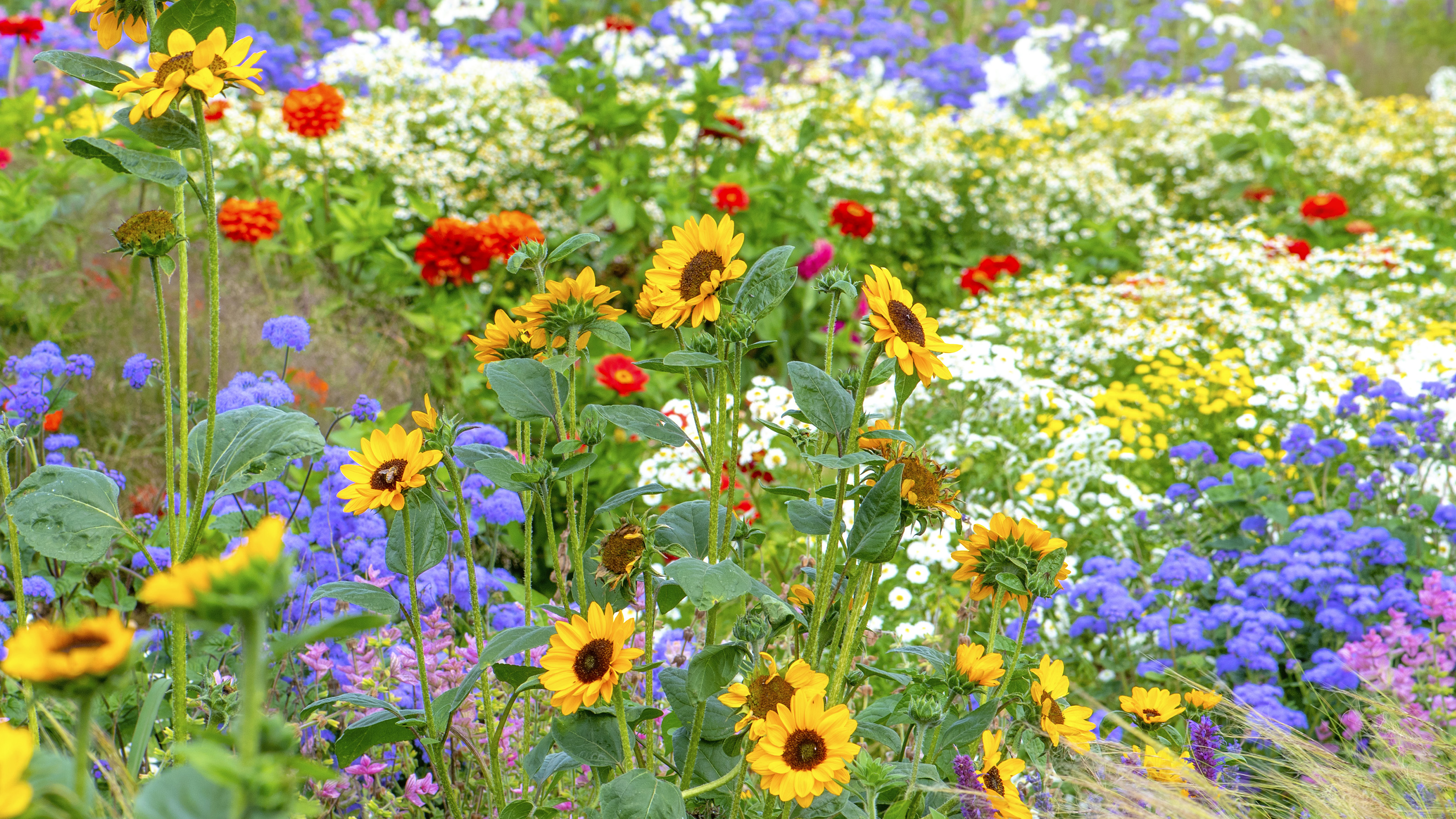
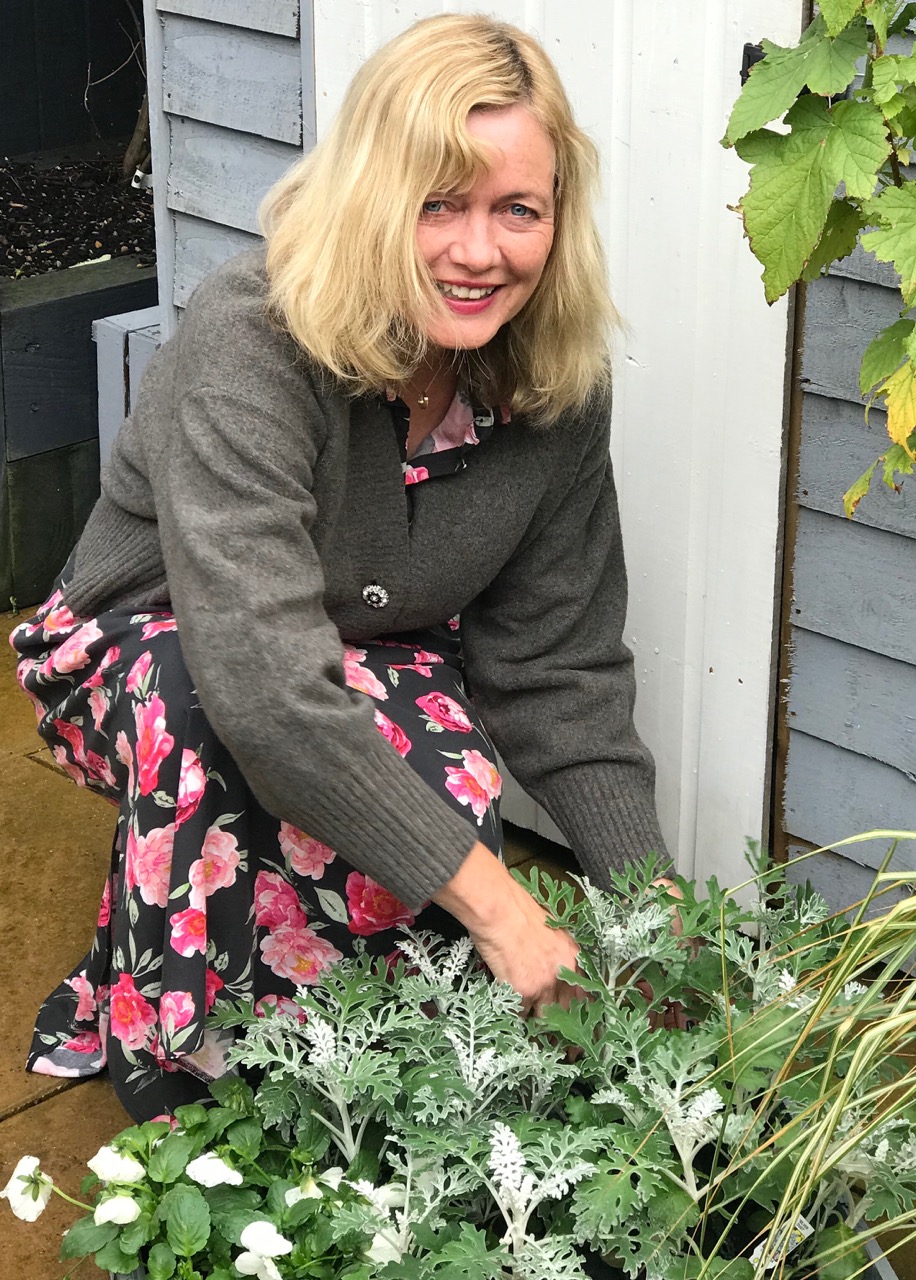
Once you know the best cutting garden flowers to grow at home, it can be surprisingly straightforward to create a bed or border which will supply enough blooms to fill vases from spring to autumn.
Mix up colors, shapes, and sizes for a stunning kaleidoscope of a flower garden, or alternatively, stick to a limited palette for a simpler feel. It doesn't matter whether you have a couple of meters of ground or a larger space for your flower bed ideas, there are plenty of possibilities for every size and budget, and plants to suit all levels of growing skill.
Bulbs demand nothing more than making a shallow hole in the ground, planting them pointed side up, covering them with soil, and waiting for them to sprout. Annuals (plants that bloom and die within a year) only require sprinkling seed into a seed tray or directly on the ground and they are the cheapest way to start a cutting garden. Perennials may take a little more time and patience to nurture, but they are an investment, as they will come back every year.
Enjoy fresh flowers in your home with the top cutting garden flowers
The best cutting garden flowers come in so many shapes and sizes, from saucer-sized dahlias in hot pinks, purple and orange, to frilly spires of color such as delphiniums and gladioli.
There are also button-shaped blooms, including astrantia, and cheery open-faced cosmos. And some emit a beautiful fragrance, too.
We've rounded up our favorites for a cut flower garden below.
1. Peruvian lily
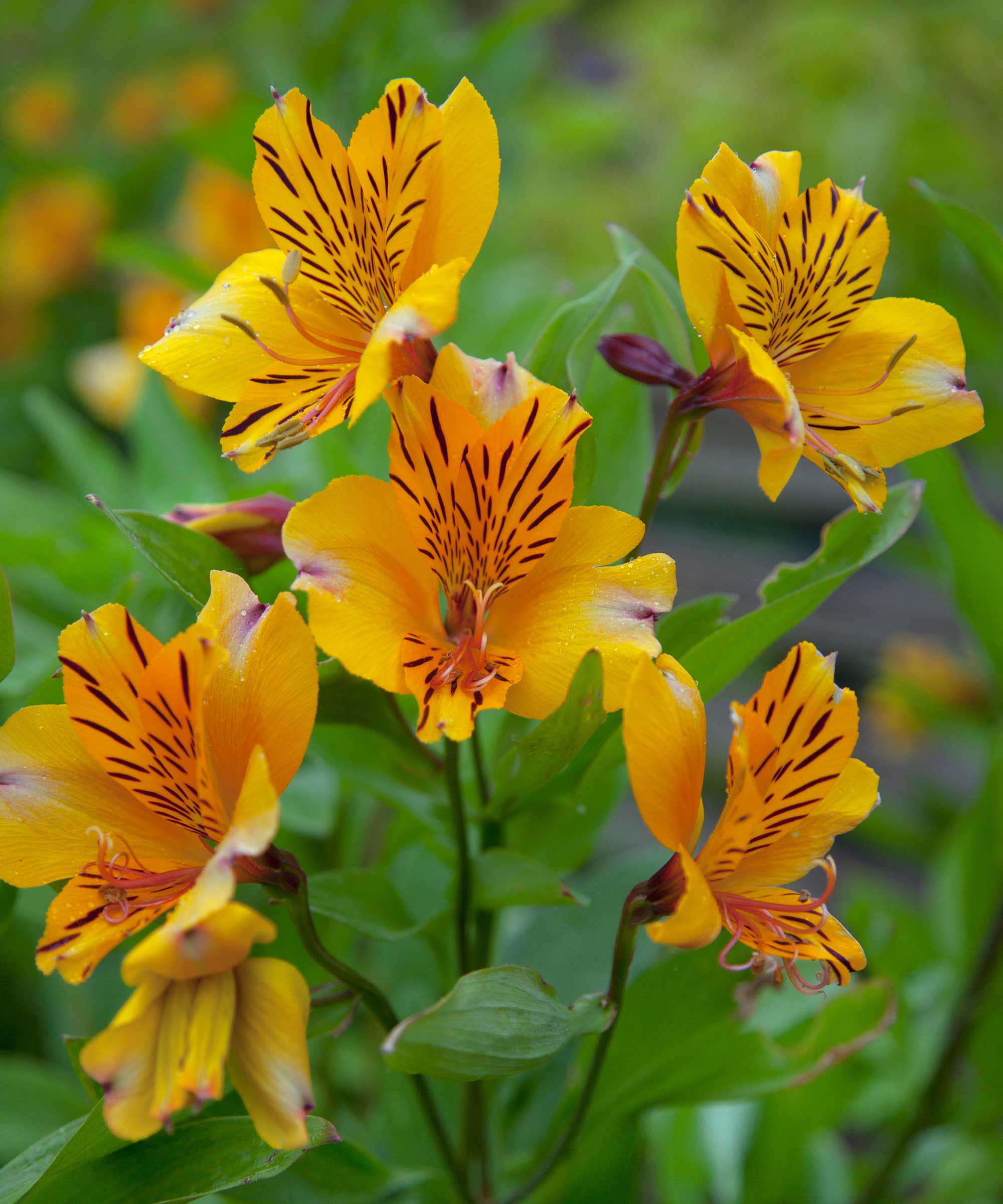
- Where to plant: In full sun, in fertile but well-drained soil
- When to cut: When the buds are showing color and are about to open, or are just starting to open
- Vase Life: 2–3 weeks
- Height: 3–4ft (90cm–1.2m)
Peruvian lilies, otherwise known as alstroemeria, have clusters of small lily-like blooms in a huge range of prettily-patterned colors.
These hardy perennials make exceptionally long-lasting cut flowers: for up to two to three weeks if positioned in a cool light place. When arranging them in a vase, remove any leaves that will be underwater.
2. Lady's mantle
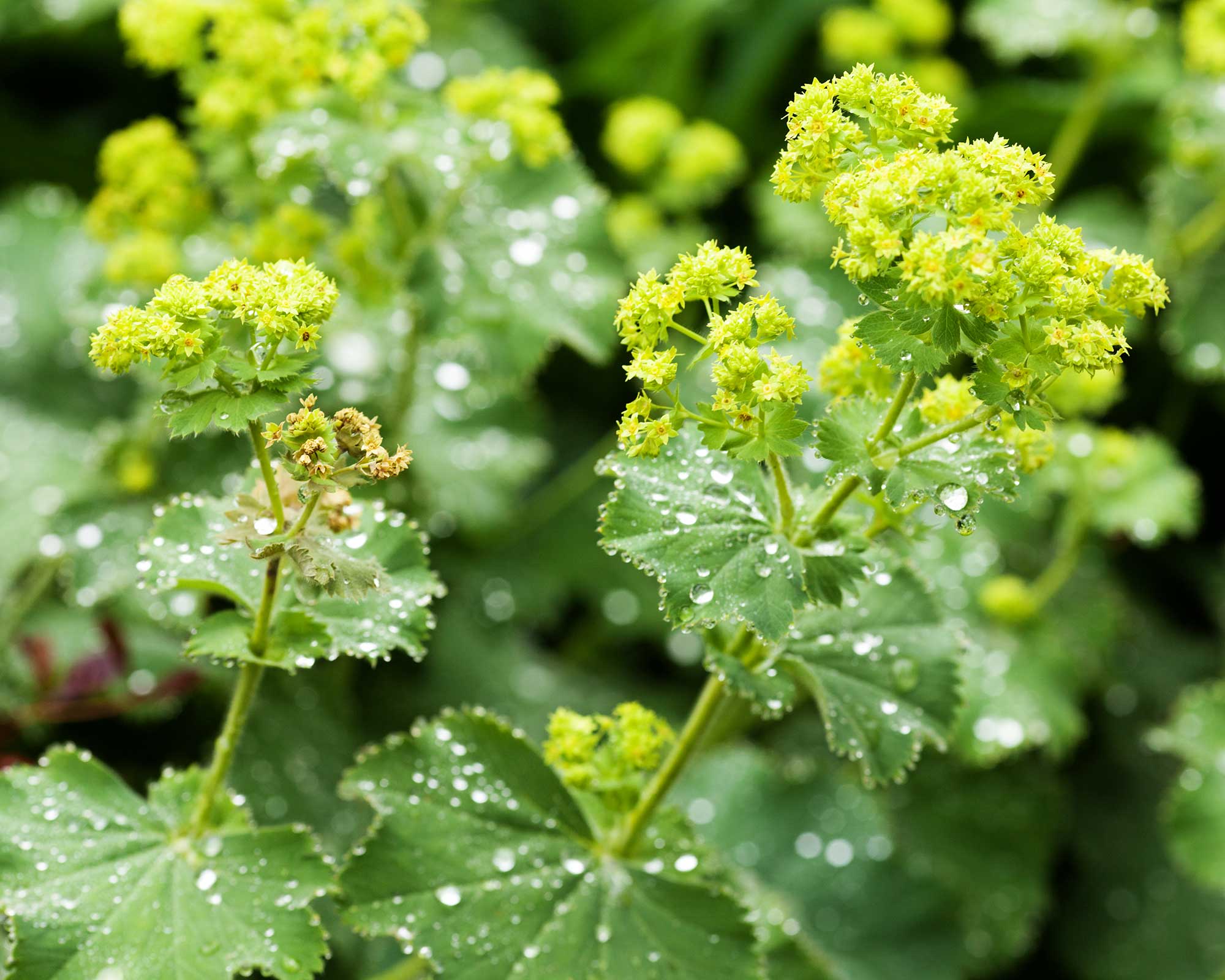
- Where to plant: Sun or partial shade in any reasonable soil
- When to cut: As the flowers are opening
- Vase life: 7–10 days
- Height: 18in (45cm)
A wonderful cottage garden plant, lady's mantle – or alchemilla mollis – is a tightly-clumping perennial that produces clouds of tiny, sharp-green flowers in early summer above pretty, slightly downy foliage.
Cut back hard and water well as the first flush of flowers fades to encourage re-blooming. Once picked, it's a good choice for buttonholes and crowns as it lasts well without water.
3. Foxgloves
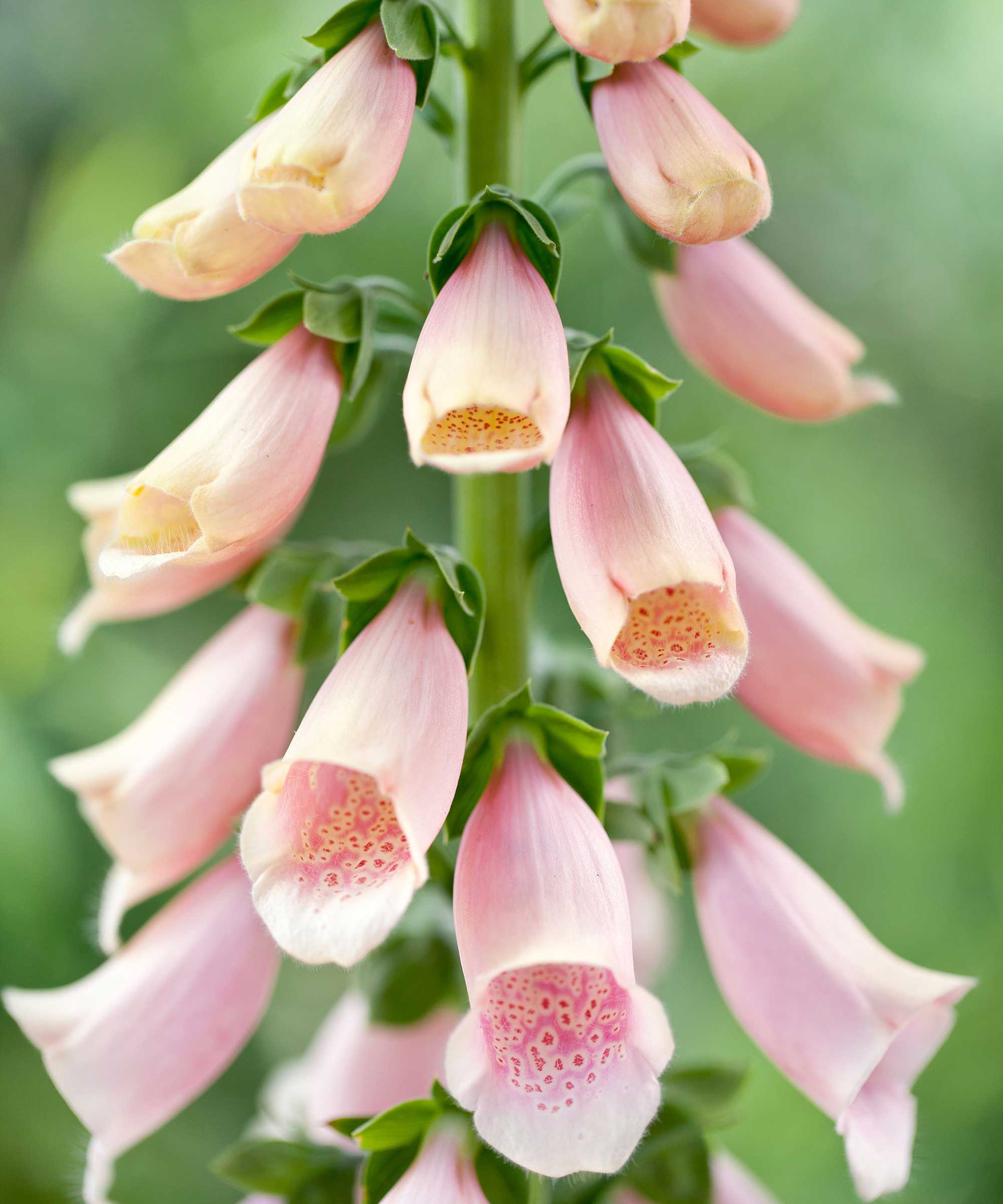
- Where to plant: Adaptable, but best in partial shade and neutral to acid soil
- When to cut: Cut when the lowest flowers are starting to open
- Vase life: 5–7 days
- Height: 3–5ft (90cm–1.5m)
An elegant and easy bee-friendly plant, the prettily-spotted flowers in purples and pinks to creams and white add informality to any arrangement.
When creating your display, nip off fading flowers from the base before submerging the stems in warm water.
4. Roses
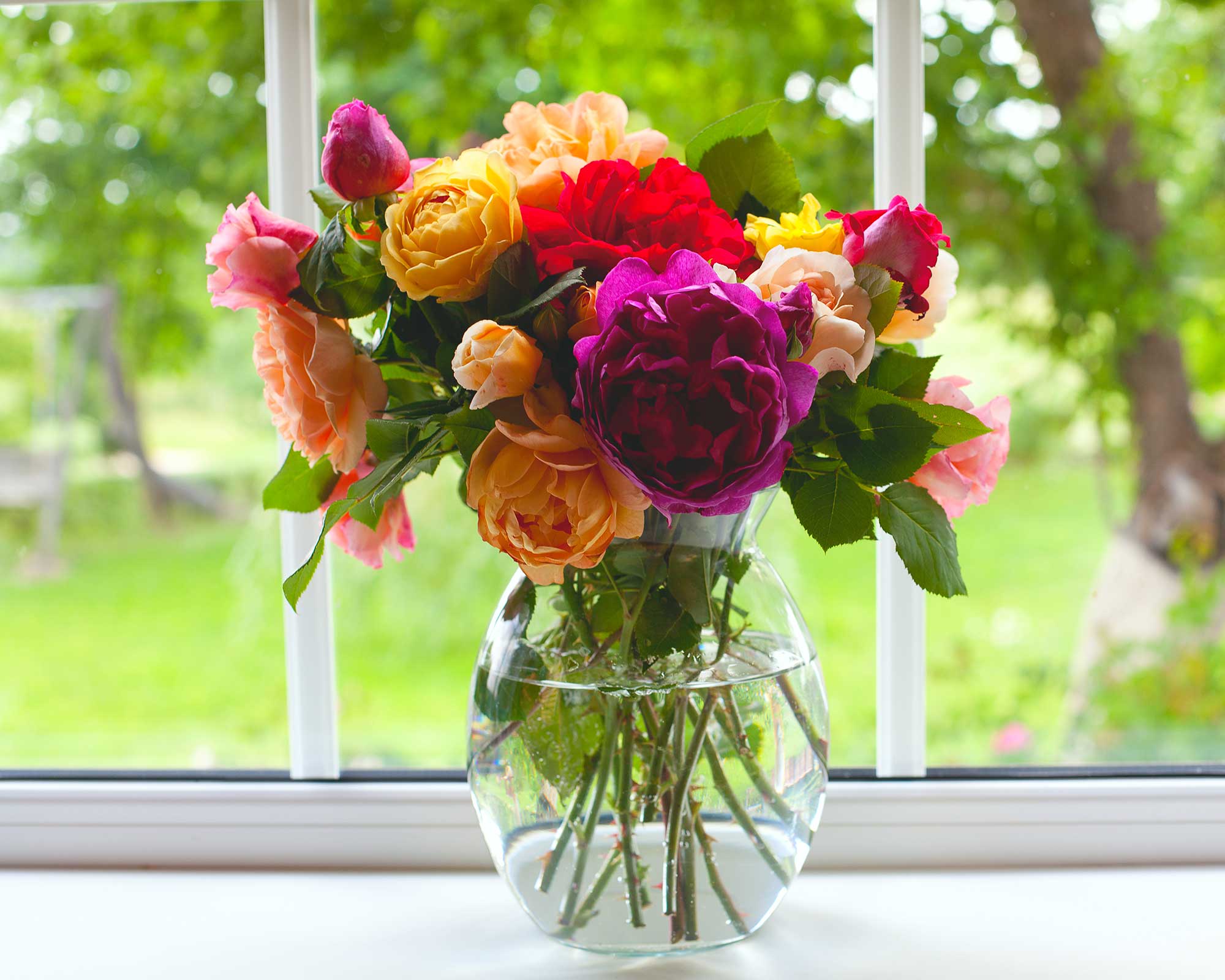
- Where to plant: Full sun, in rich soil that is not parched or waterlogged
- When to cut: When the first petals are unfolding from the buds
- Vase life: 7–10 days
- Height: 2–4ft (60cm–1.2m)
All types of roses are classic cut flowers to grow and can be used for large arrangements down to button holes. And of course, as well as looking beautiful, most have the extra bonus feature of a gorgeous fragrance.
Cut the stems at an angle, scald them in hot water, then stand them in warm water. Ensure that you match the size of the arrangement with the size of the individual flowers for the best results.
5. Cornflower
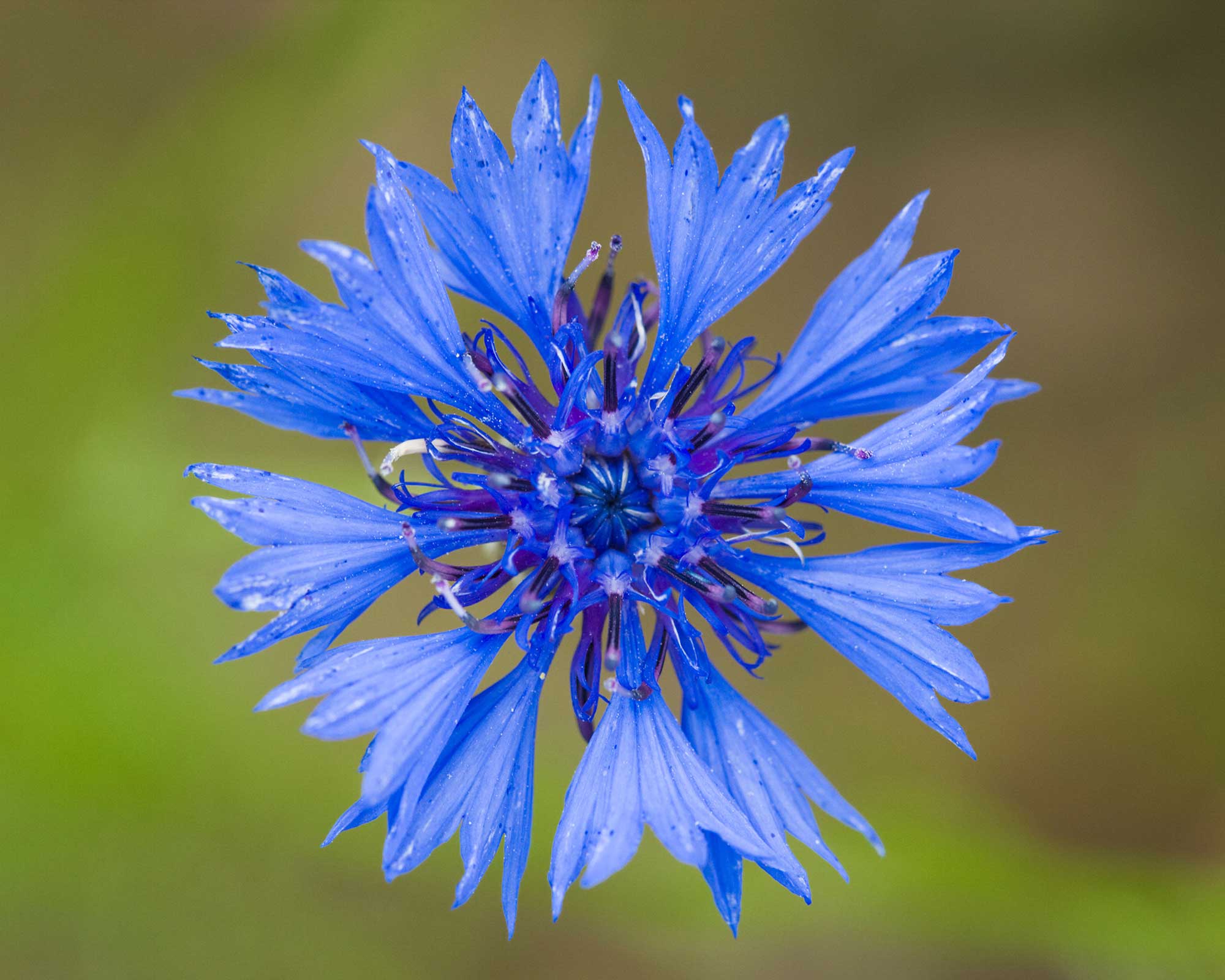
- Where to plant: Fertile, well-drained soil in plenty of sun. Best sown in late summer for the following year
- When to cut: When the flowers are half open
- Vase life: 7 days
- Height: 3–5ft (90cm–1.5m)
This beautiful annual has vibrant blue daisies that open on slender, silvered foliage over many, many weeks if cut or deadheaded regularly.
For indoor displays, strip off any leaves that will be underwater. Changing the water daily will keep them looking fresh for longer.
6. Delphiniums
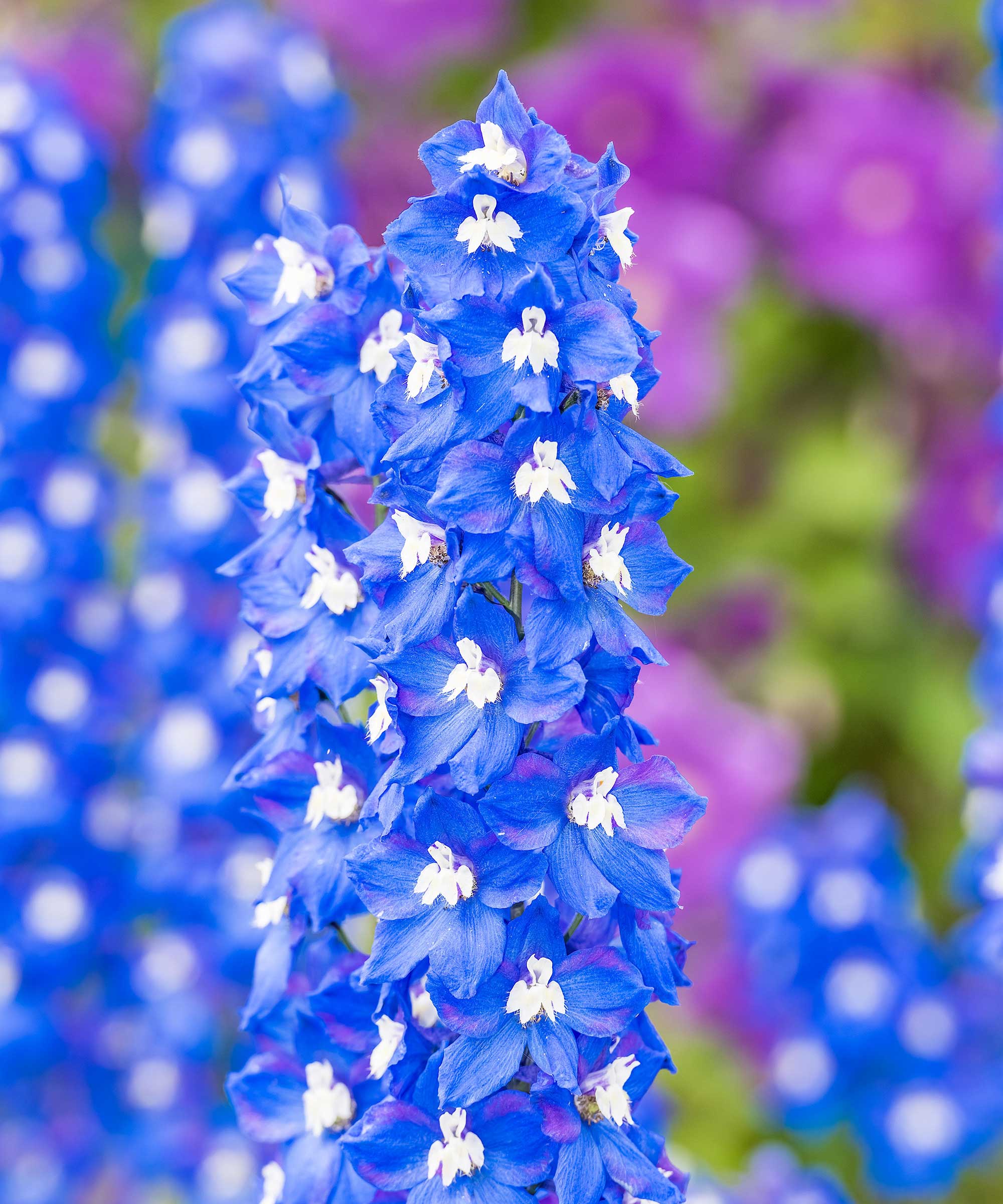
- Where to plant: Full sun, in any reasonable, well-drained soil. Usually needs support
- When to cut: When a quarter to a third of the individual flowers are open
- Vase life: 4–12 days
- Height: 3–6ft (90cm–1.8m)
Delphiniums are a classic addition to a cut flower garden. Usually blue-flowered, these perennials bear impressive spikes that may also be in lavender shades or white.
Although they may be too tall for many arrangements, they are certainly dramatic. They respond very well to flower food added to the vase.
7. Larkspur
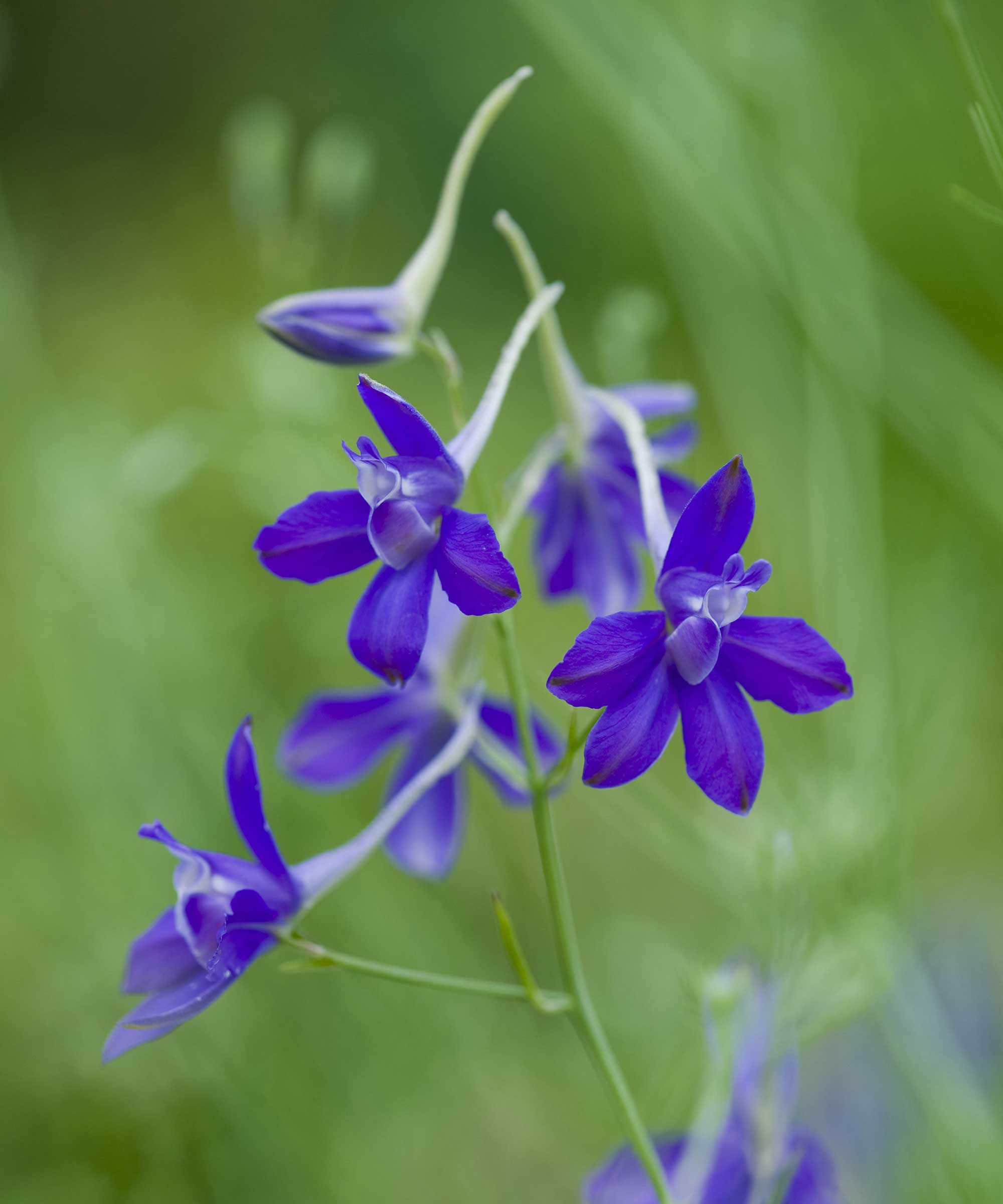
- Where to plant: Any sunny position – they do well in many different soils
- When to cut: Pick when a third of the flowers on the spikes are open
- Vase life: 4–12 days
- Height: 2–4ft (60cm–1.2m)
Larkspur plants are an annual type of delphinium with much finer foliage, a more delicate look, and flowers in a range of both soft and rich colors and bicolors. They look just as stunning in the garden as they do in an informal arrangement indoors.
As they are smaller than perennial delphiniums, they are more versatile for using as cut flowers and make good dried flowers, too. They similarly respond well to flower food in the vase.
8. Sea holly
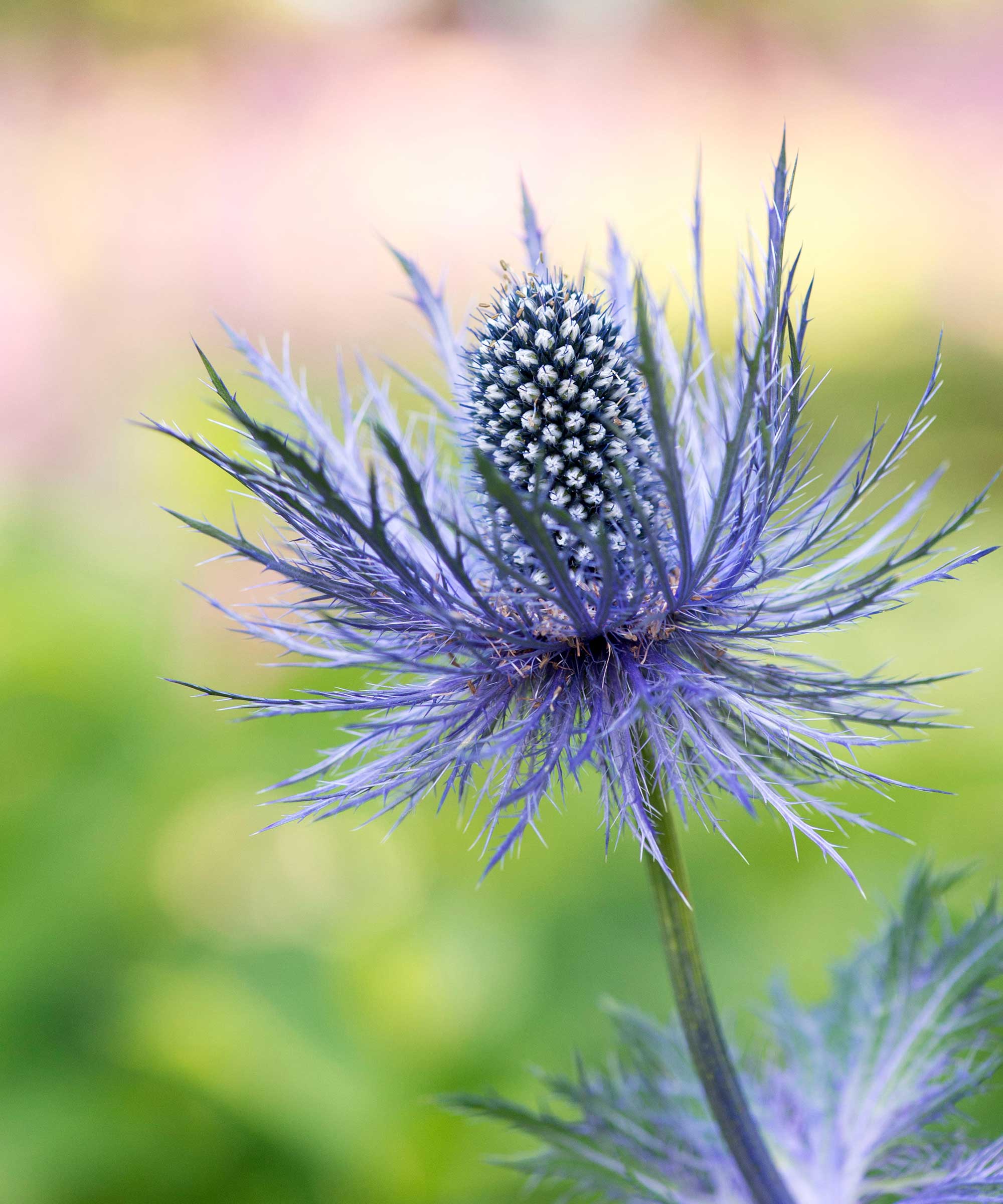
- Where to plant: Happiest in any reasonable, well-drained soil in sun
- When to cut: When the first flowers in the spray are just starting to open
- Vase life: 7–10 days
- Height: 2–4ft (60cm–1.2m)
A fantastic drought tolerant plant, sea hollies, otherwise known as eryngium, are like very stylish thistles with heads in blue, green, and silver tones. They come in a variety of sizes, but unlike the normal thistle, they don't have invasive roots.
Many also have dramatic spiky foliage. Once picked, plunge them into deep water for a few hours before arranging. They last exceptionally well.
9. Dianthus
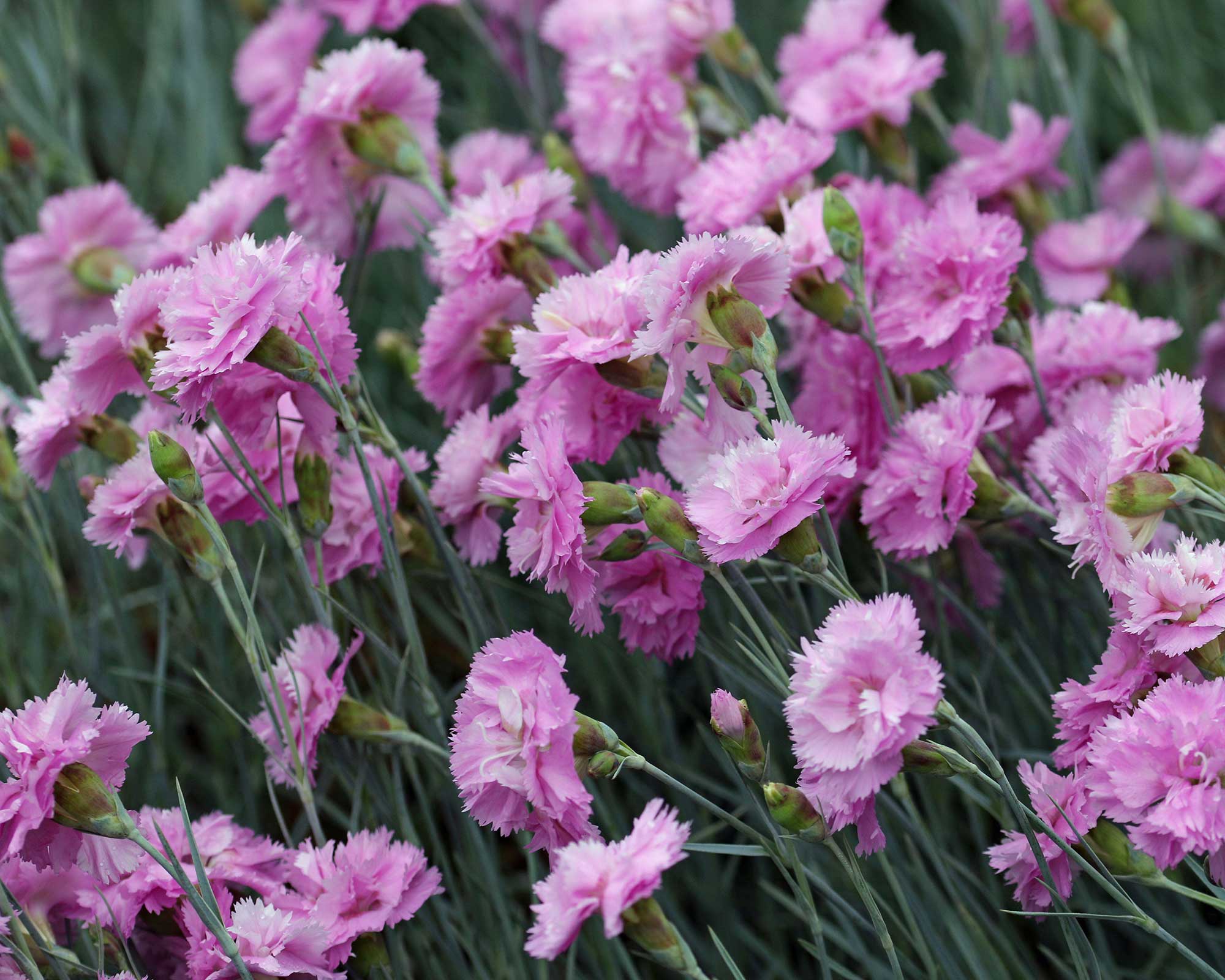
- Where to plant: In sun with good drainage – especially happy on limey soils
- When to cut: When the first buds are starting to show color
- Vase life: 7–10 days
- Height: 12–20in (30–50cm)
Pretty to look at and beautifully fragrant, dianthus, also known as pinks, have mostly double flowers in reds, pink, and white, plus various combinations. Their foliage is slender and silvery.
They are a good alpine plant and look lovely in small, informal arrangements when picked – in small glass jars for instance. Strip off the lower leaves when arranging them.
10. Sweet peas
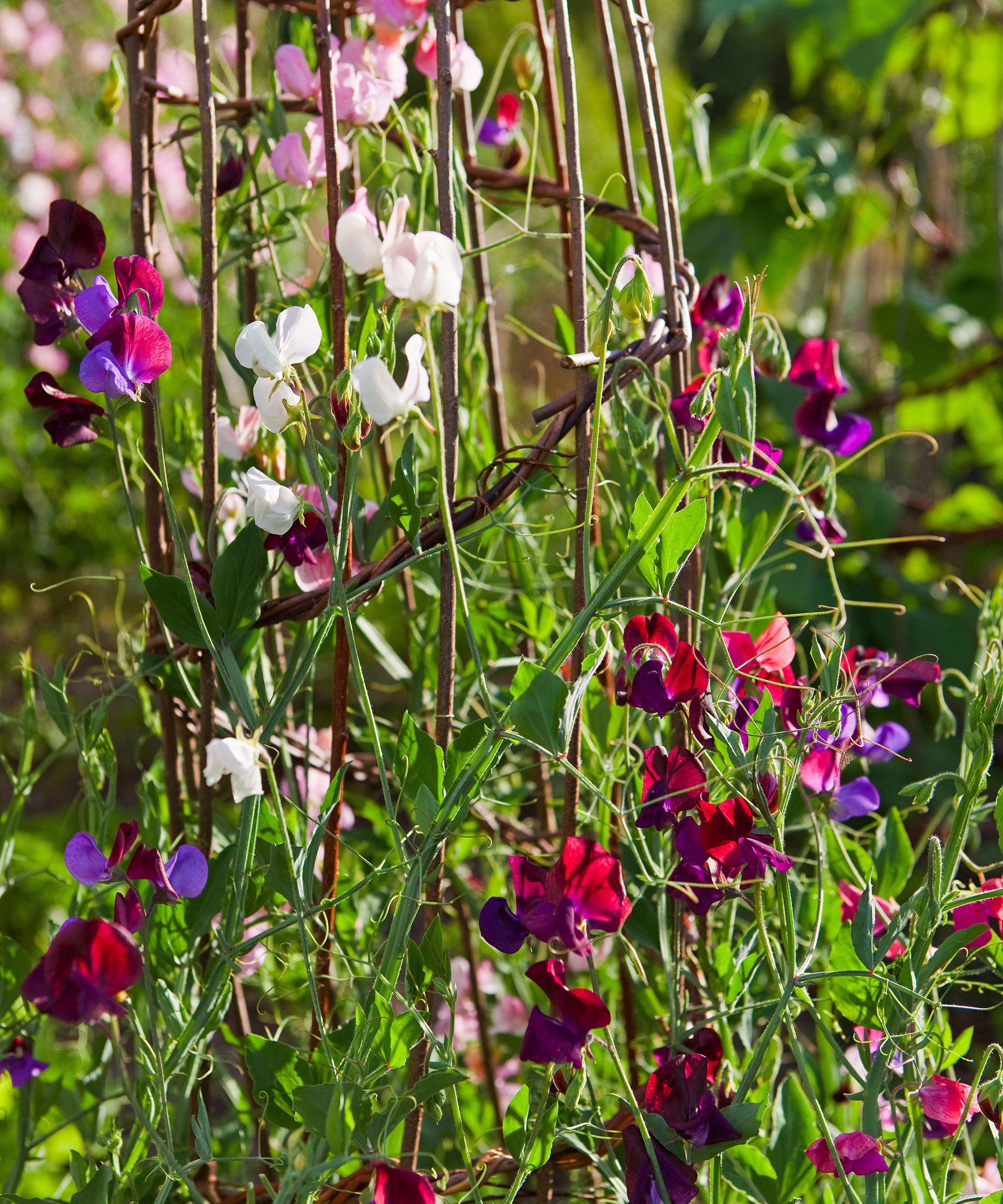
- Where to plant: In well-drained but nutrient-rich soil with full sun
- When to cut: When the lower flowers on the stem have opened, but the top one or two are still unfurling
- Vase life: 3–7 days
- Height: 2–6ft (60cm–1.8m)
With their ruffled petals, myriad colors, and tendrils of foliage, sweet peas are quintessentially English cut flowers to grow. These are hardy annual climbing plants that need a support frame: a cane wigwam is ideal. Young plants can be bought in spring from garden centers, but you can also learn how to grow sweet peas from seed.
When it comes to picking in early to late summer, snip the flowers as they appear: the more you pick, the more they produce. The top sweet pea choice for florist Tracey Mathieson, who has her own cutting garden in Northamptonshire, is 'Mollie Rhilstone' which has delicately blushed petals, a strong fragrance, and long straight stems which are perfect for a vase.
A top choice for Amateur Gardening expert Anne Swithinbank is 'Mrs.Bernard Jones'. 'This cultivar delivers frilly white blooms flushed clear pink,' she says.
11. Sunflowers
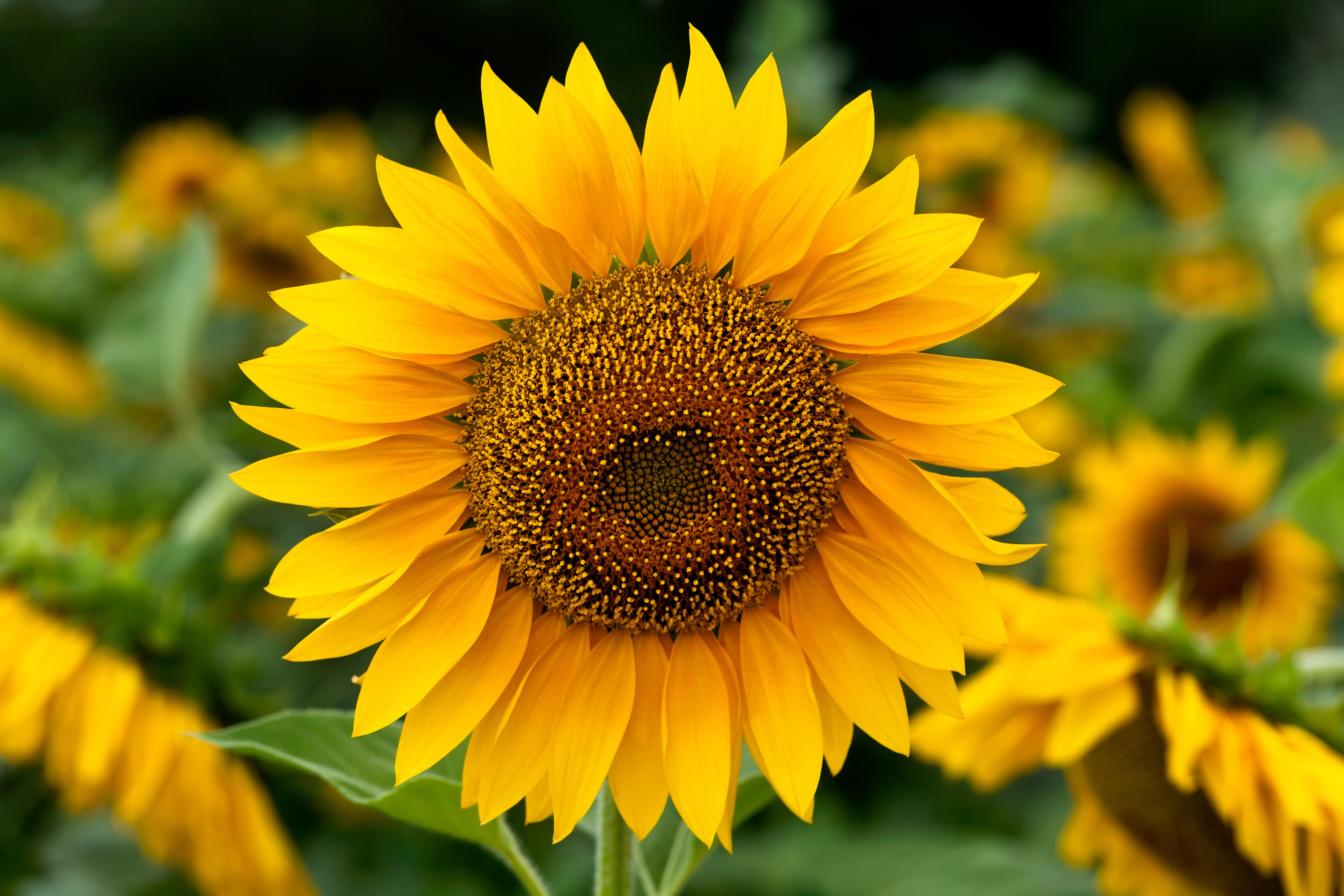
- Where to plant: Thrives in sun, in most soils, though richer conditions make better plants. May need support
- When to cut: Pick in bud or as the flowers are opening
- Vase life: 7–10 days
- Height: 3–6ft (90cm–1.8m)
Sunflowers create a splash of sunshine in a simple jug on a kitchen table. If you are looking for a foolproof flower to create a cutting patch, you can't go wrong with these favorites.
Opt for a multiheaded variety that will supply plenty of flowers. Ones to try include 'Harlequin', pale yellow 'Vanilla Ice', or a tawny 'Red Sun'.
Always remove the lower leaves from the stems before immersing them in water.
12. Dahlias
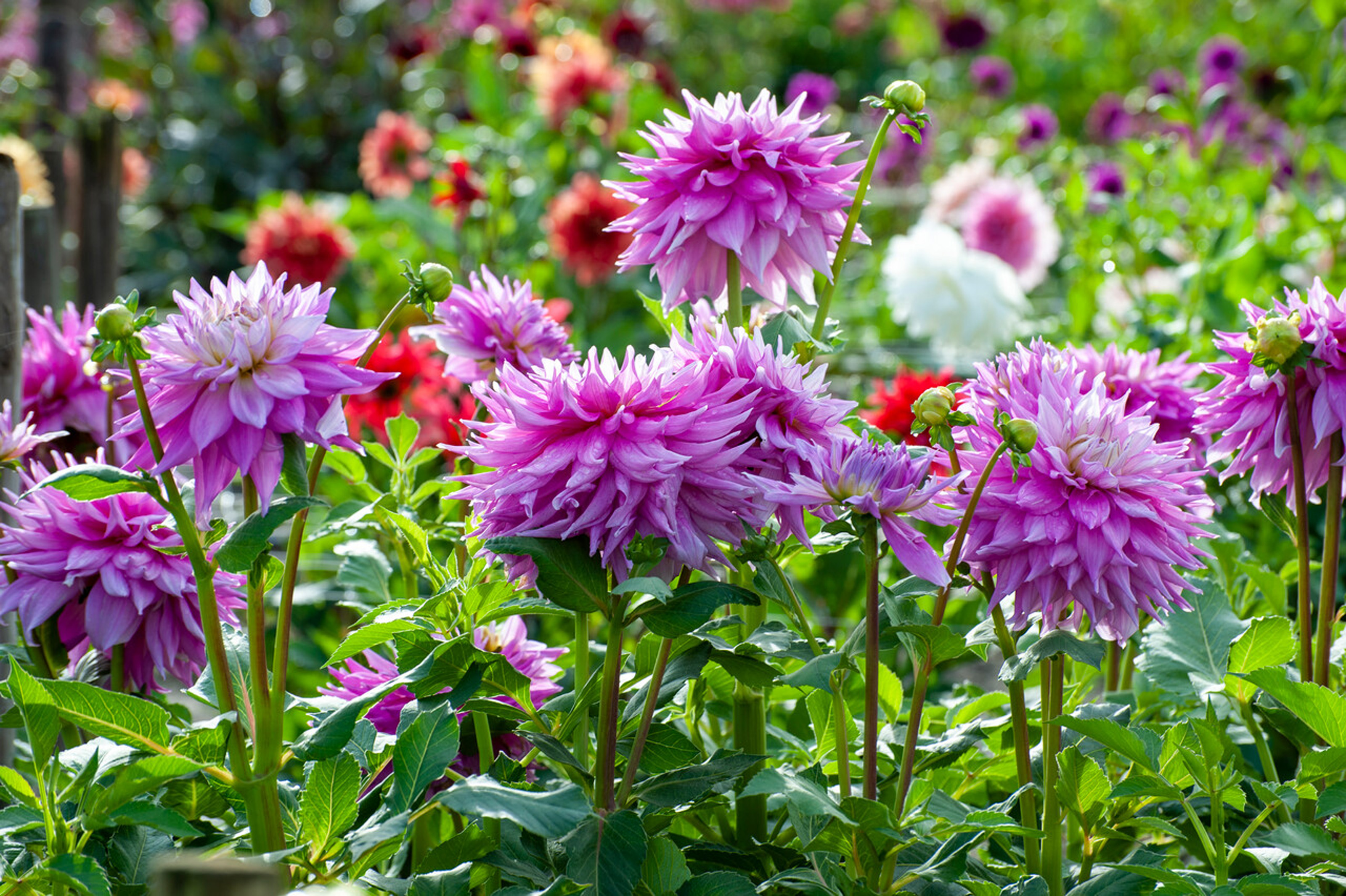
- Where to plant: Full sun, in rich well-drained soil. Usually needs support
- When to cut: When the flowers are almost fully open
- Vase life: Up to 5 days
- Height: 2–4ft (60cm–1.2m)
For a late summer whoosh of color, it's worth learning how to grow dahlias. They come in a rainbow of jewel shades, blooming until the first frosts. Don't let the look of wizened dahlia tubers put you off, as they are straightforward to grow.
Florist and flower grower Tracey Mathieson recommends 'Karma Choc' which has velvety dark red petals on strong stems, bronze foliage, and a sweet chocolate scent.
For Amateur Gardening expert Anne Swithinbank, 'Chat Noir' (pictured below) is hard to beat as a cutting garden flower. 'For vases, I like the smaller singles, waterlily-shaped blooms, and cactus types like this long-stemmed, deep red cultivar with narrow, pointed petals. A good investment, dahlias return to growth year after year but may require lifting and frost-free storage where deep frosts are common.'
Our top tip? Dahlias flop in a vase unless the last inch of the stem is placed in boiling water for about 20 seconds after cutting.
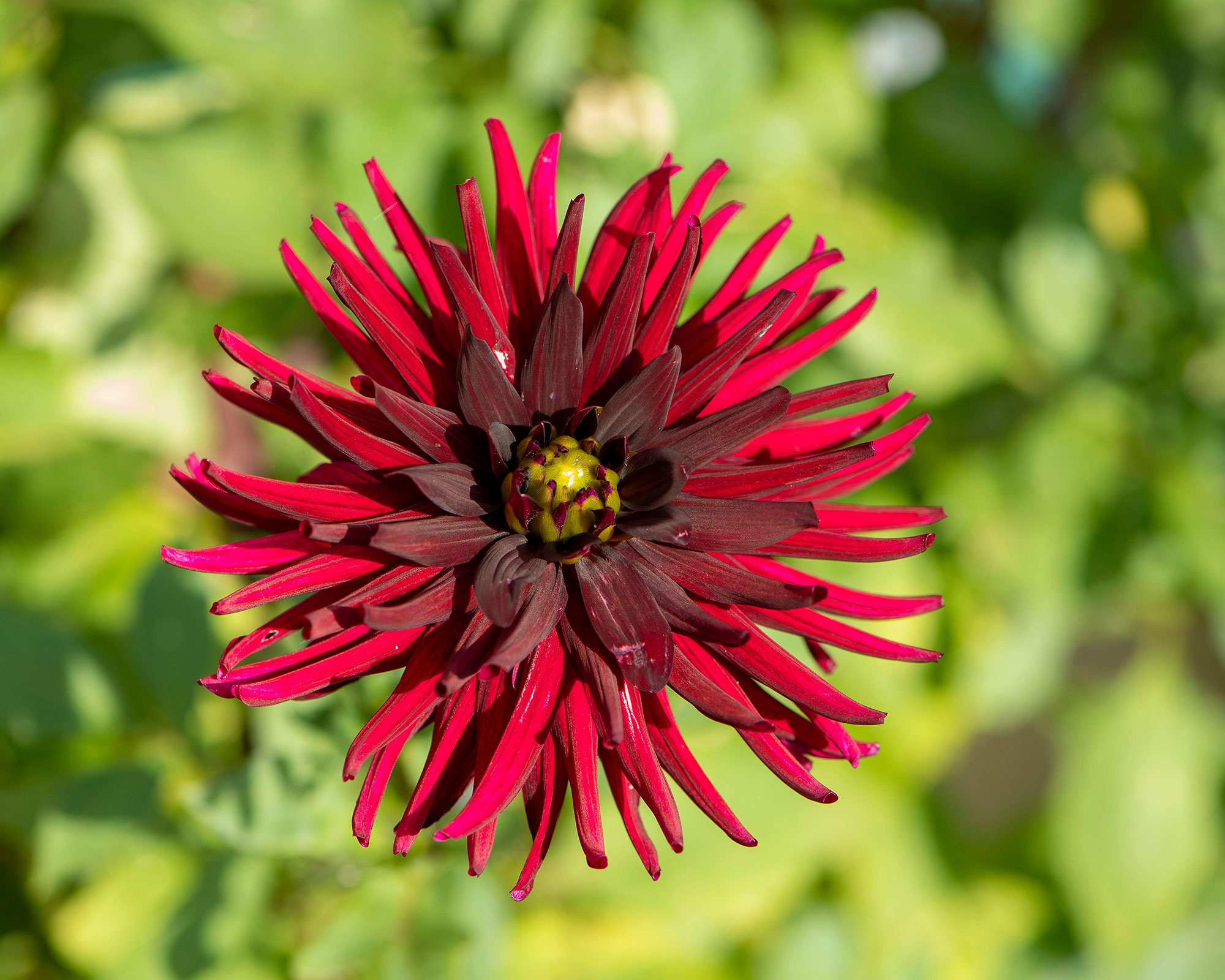
13. Cosmos
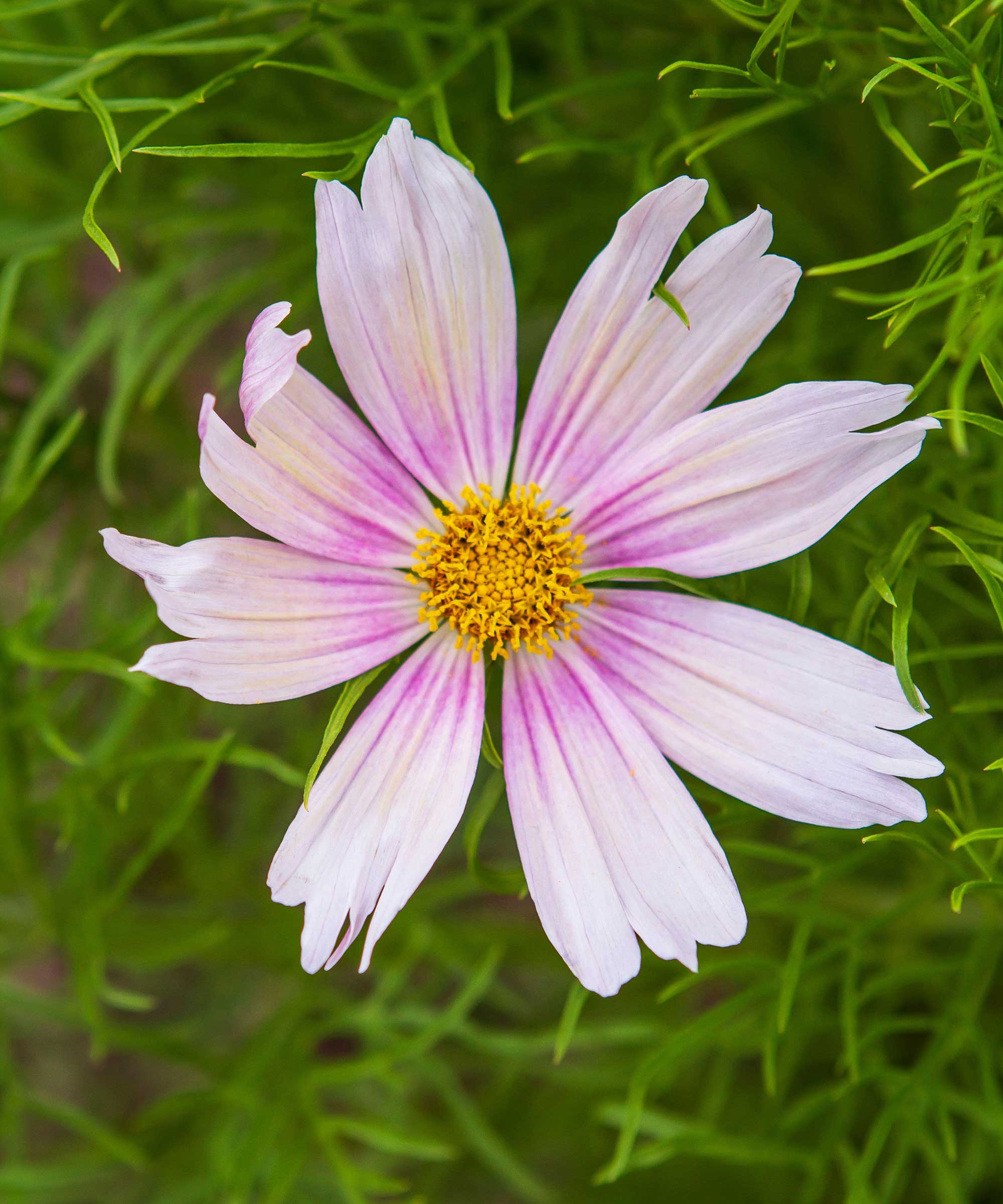
- Where to plant: Sun, with fertile soil. Usually needs support
- When to cut: When the flower buds show color, but are not quite open
- Vase life: 5–7 days
- Height: 2–4ft (60cm–1.2m)
Cheerful, everyday flowers don't come any easier than cosmos. There are so many different types of cosmos to choose from, with seed companies developing new varieties all the time. Choose from simple white ‘Purity’ with single flowers on long stems, or try the colorful frilly 'Pink Popsocks'.
These annuals will flower from midsummer to autumn. Keep cutting the blooms, and they will keep on flowering for you. Amateur Gardening's Anne Swithinbank recommends growing Cosmos bipinnatus 'Apricot Lemonade'. 'The crimp-edged petals of this half-hardy annual are soft apricot, shading to pink at the center,' she says.
'Try bunching them with cherry-colored penstemon and lady's mantle.'
14. Astrantia
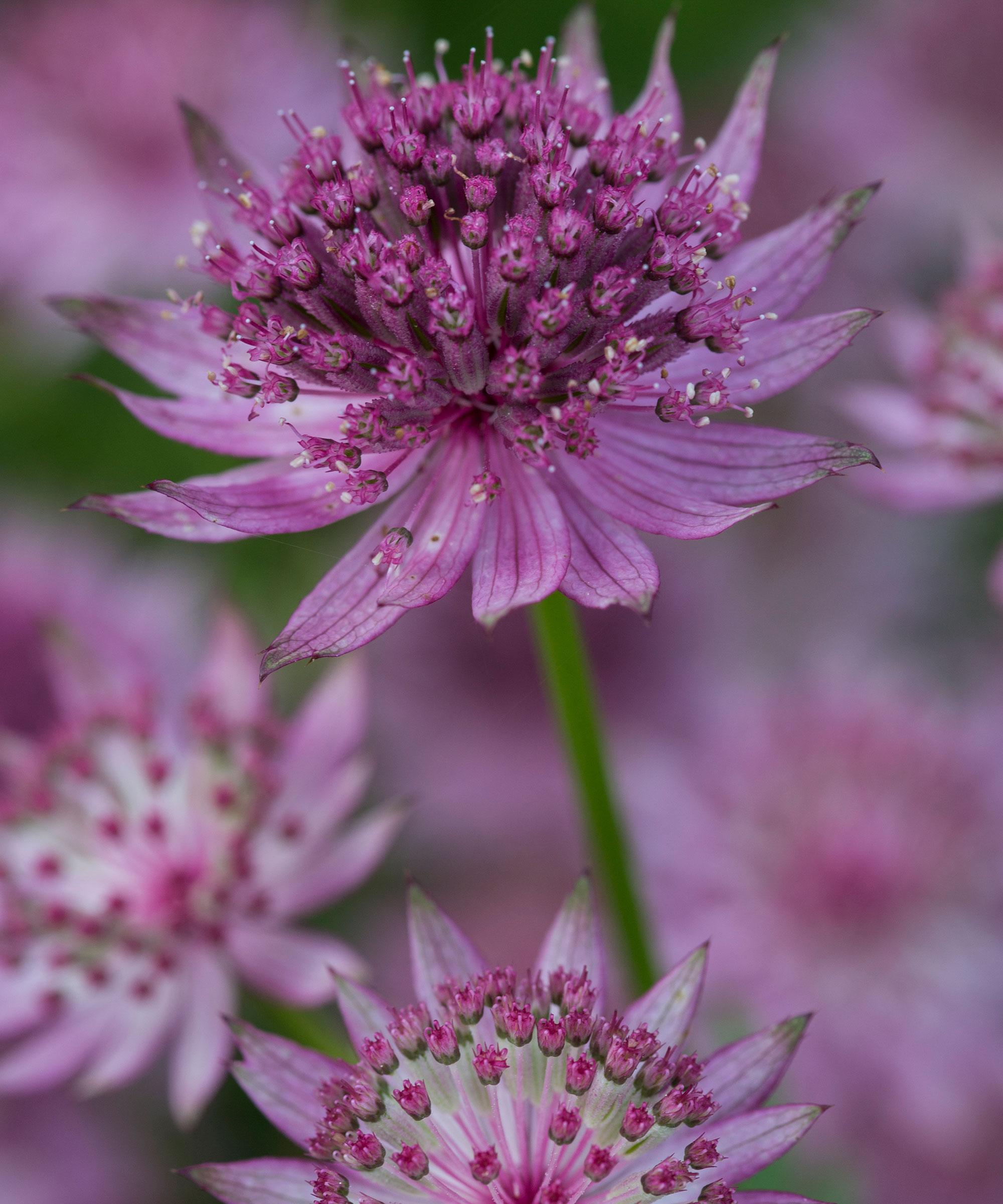
- Where to plant: In dappled shade and moist soil
- When to cut: When they're in full bloom
- Vase life: 5–10 days
- Height: 1–2ft (31–61cm)
These are dainty, subtle flowers that make a wonderful addition to a cut flower garden. They have neat, button-shaped blooms on sturdy stems.
Astrantia are perennials, best bought as young plants from a garden center, rather than grown from seed. Astrantia ‘Buckland', with a pale pink flower, is one of the longest to bloom and will tolerate drier conditions than most other varieties.
15. Gladioli
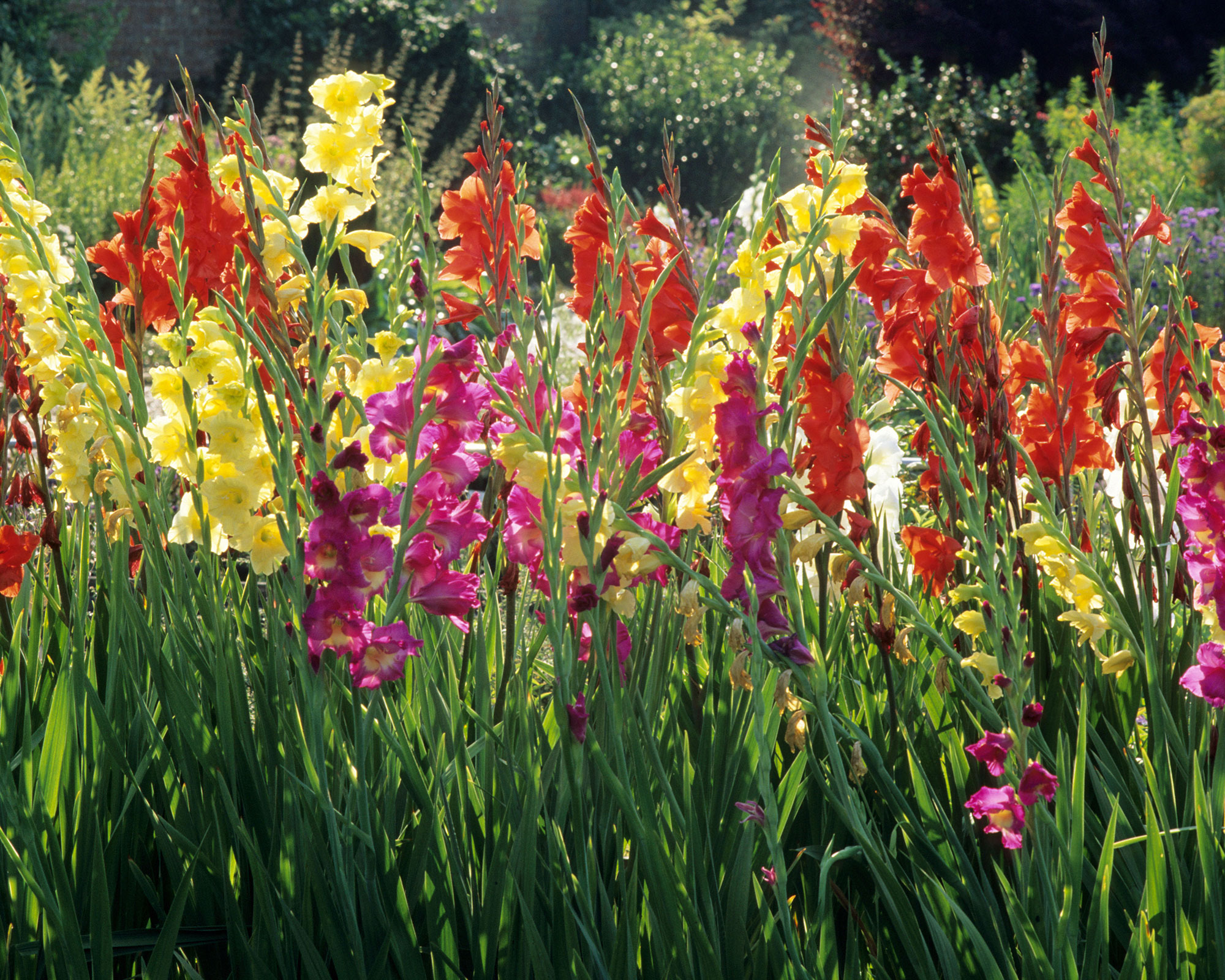
- Where to plant: Well-drained, moderately fertile soil in full sun.
- When to cut: When the bottom flower on the spike has opened but the above ones haven't
- Vase life: 7–10 days
- Height: 2–5ft (60cm–1.5m)
There’s nothing subtle about gladiolus, but these lofty, flamboyant flowers, also known as 'sword lilies' will make a real splash in a cutting garden. Plus, planting gladioli bulbs is easy.
Although they have a reputation for being gaudy, there are some stunning colors available. 'Green Star' is modern and fresh, 'Plum Tart' is a deep velvety scarlet, and 'Peter Dean' has gorgeous, ruffled, apricot flowers.
16. Tulips
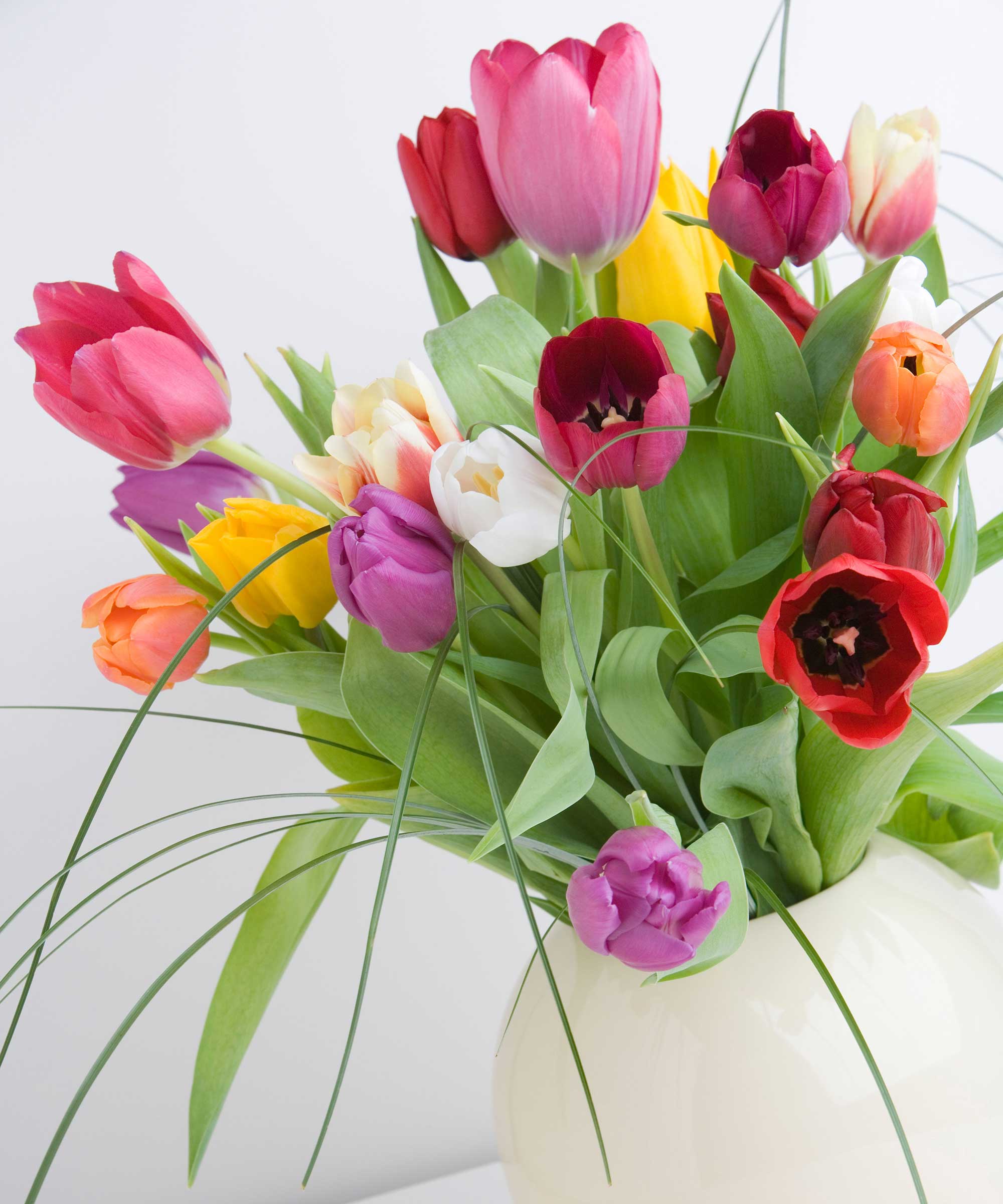
- Where to plant: Well-draining soil in full sun
- When to cut: When the buds have full color and are just about to open
- Vase life: Up to 7 days
- Height: 6in–2ft (15–60cm)
Tulips are one of the best cutting garden flowers for spring. They’re not a ‘cut and come again’ flower, but they do make a welcome splash of color before the rest of the garden hits its stride.
Remember to plant tulip bulbs in groups for impact, at least six or seven, so you have plenty for a bunch.
If your cut tulips flop in their vase, put a penny in the water and they will soon stand tall again. Top them up daily as they are thirsty flowers.
17. Ammi Majus
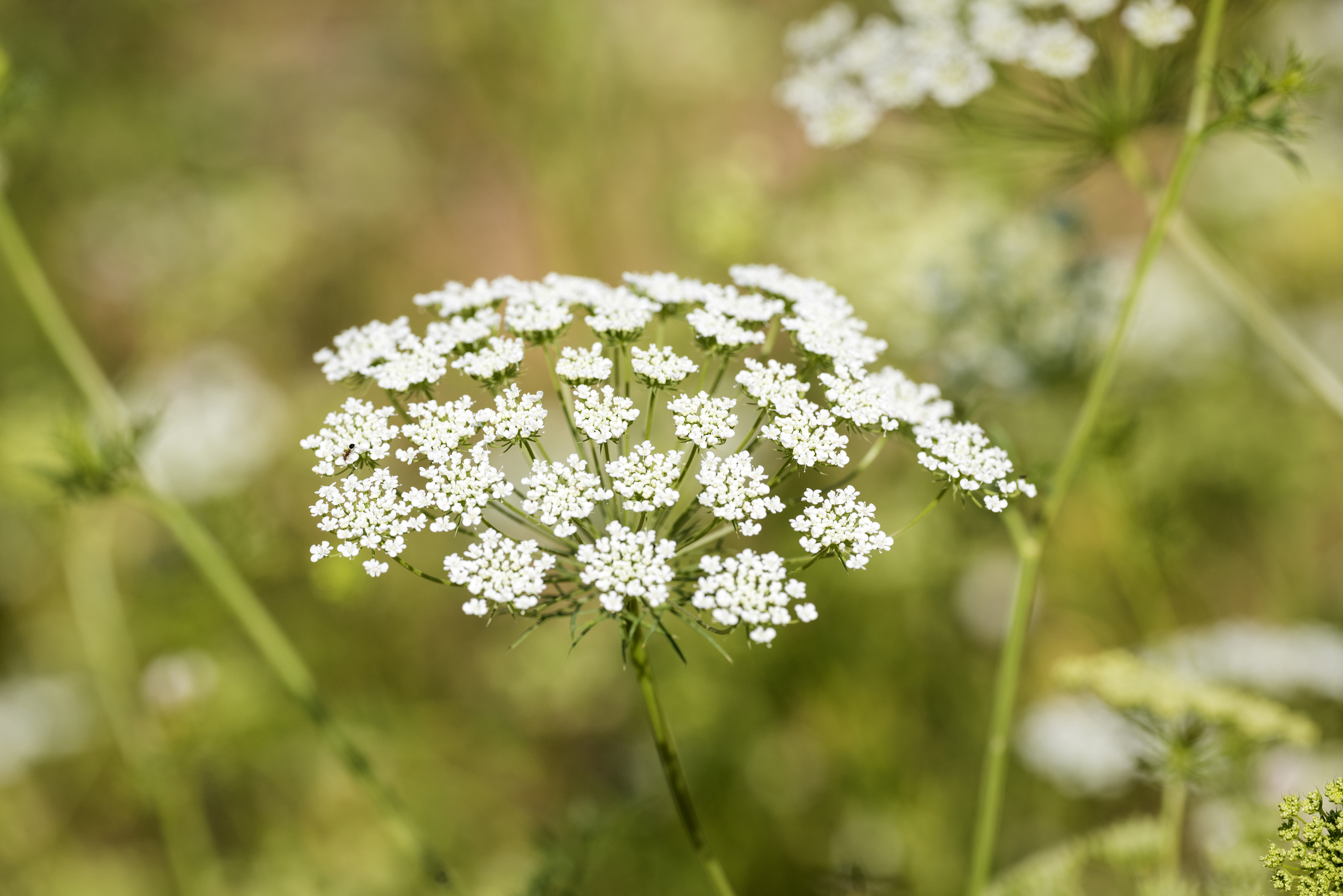
- Where to plant: Fertile, well-drained soil in plenty of sun. Best sown in late summer for the following year
- When to cut: When most of the clusters of flowers are open, but cut too late and they soon collapse
- Vase life: Up to 10 days
- Height: 2–3ft (60–90cm)
These lovely, lacey annuals are having a fashionable moment. Sometimes described as 'posh cow parsley', their delicate white flowers create dreamy clouds, seeming to almost hover above a vase.
'Bishop's flower is a hardy annual from the cow parsley family originating in Southern Europe and North Africa,' says Anne Swithinbank. 'Good, well-drained soil ensures a display of fern-like foliage and umbels of white flowers.'
Leave some of the flowers to self-seed and you will have another crop the following year. Try 'Graceland', or 'Queen of Africa'.
18. Zinnias
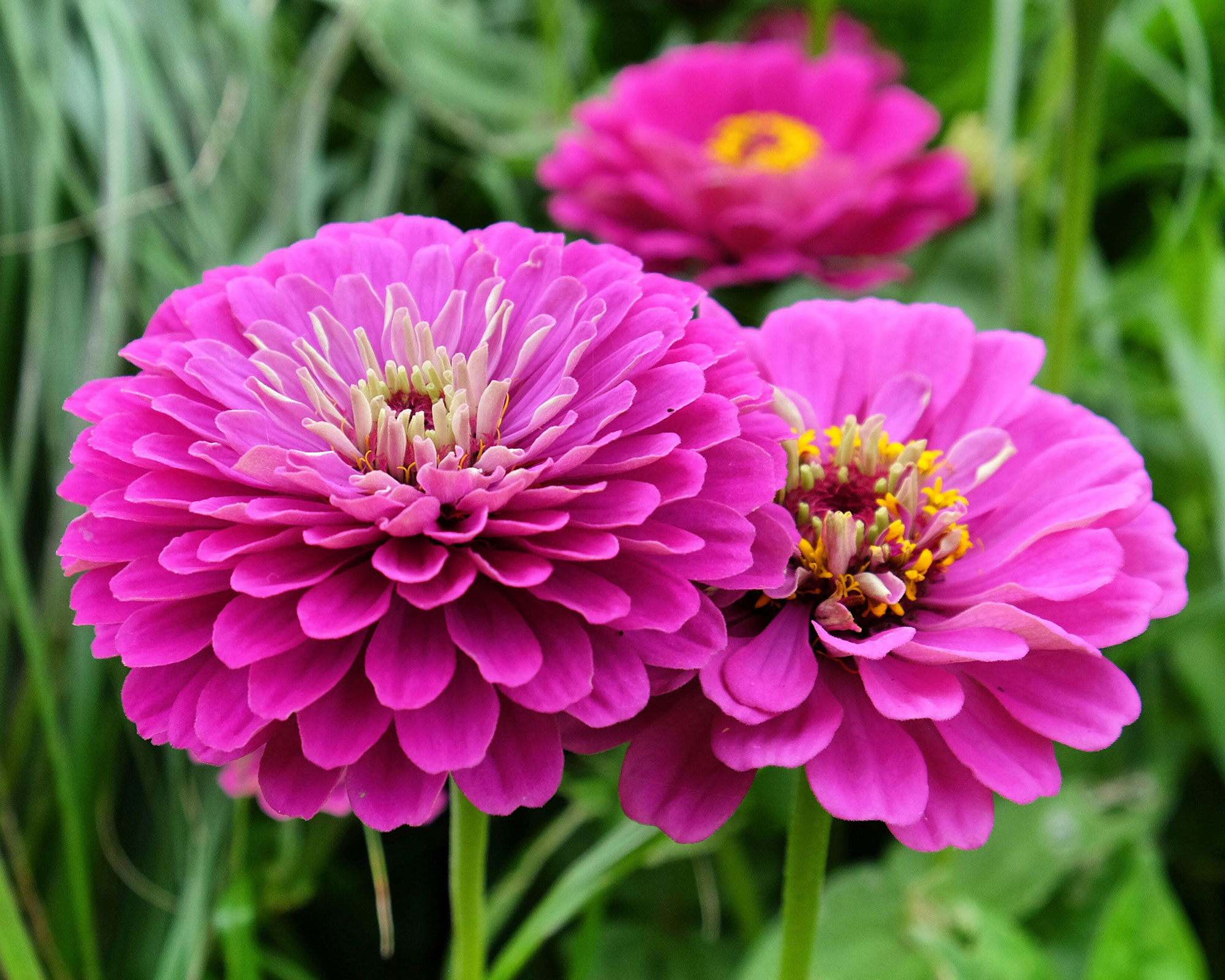
- Where to plant: In well-drained soils high in organic matter in full sun
- When to cut: When they are in flower and the stems feel stiff rather than bendy
- Vase life: 5 days
- Height: 1–3ft (30–90cm)
With their origins in Mexico, dazzling half-hardy zinnias enjoy growing in warm, sheltered positions.
Sow zinnia seeds under cover in early spring straight into modules, as seedlings resent disturbance. By late spring, make direct sowings into warmed, good but well-drained soil, where they will bloom from midsummer into fall.
There are lots of spectacular types of zinnia. But, 'for strong stems of large purple-pink blooms that blend especially well with citrusy colors, try Zinnia elegans ‘Purple Prince’ AGM [shown above],' says Anne Swithinbank.
19. Snapdragons
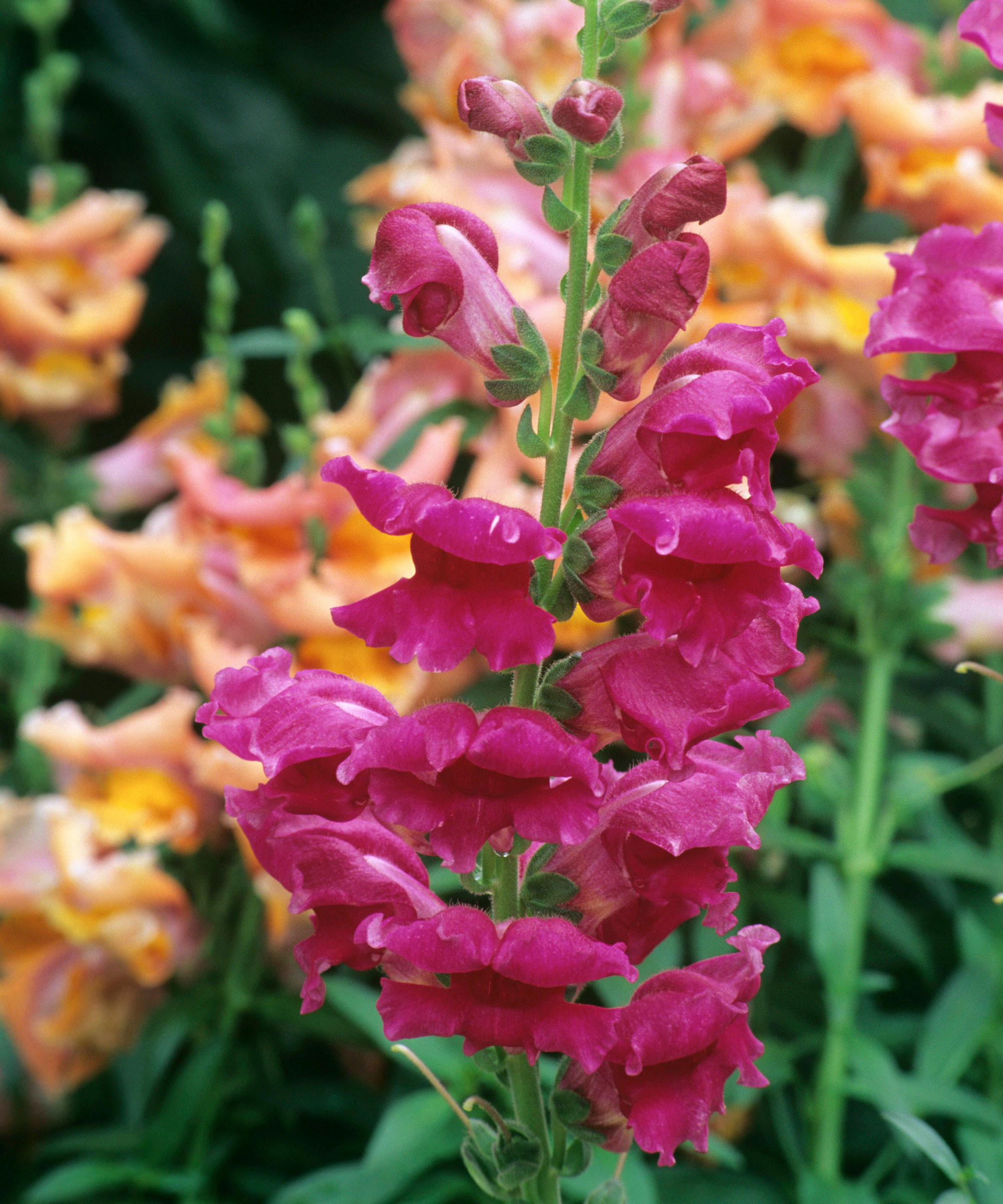
- Where to plant: In sun, with rich but well-drained soil
- When to cut: When the lowest three flowers are open
- Vase life: 7–10 days
- Height: 2–3ft (60–90cm)
A classic plant for cottage garden ideas, tiny snapdragon seeds require a late winter or early spring sowing, scattering them thinly, covering them sparsely, and germinating at 60-65˚F (15-18˚C).
Keep seedlings cool and bright to avoid damping off disease and transplant them grid-fashion in a seed tray before potting. Ordering young plants avoids the fiddle.
Plant 12in (30cm) apart for spires of lightly scented blooms all summer. One of Anne Swithinbank's favorite options is ‘Lucky Lips’.
20. Baby's breath (gypsophila)
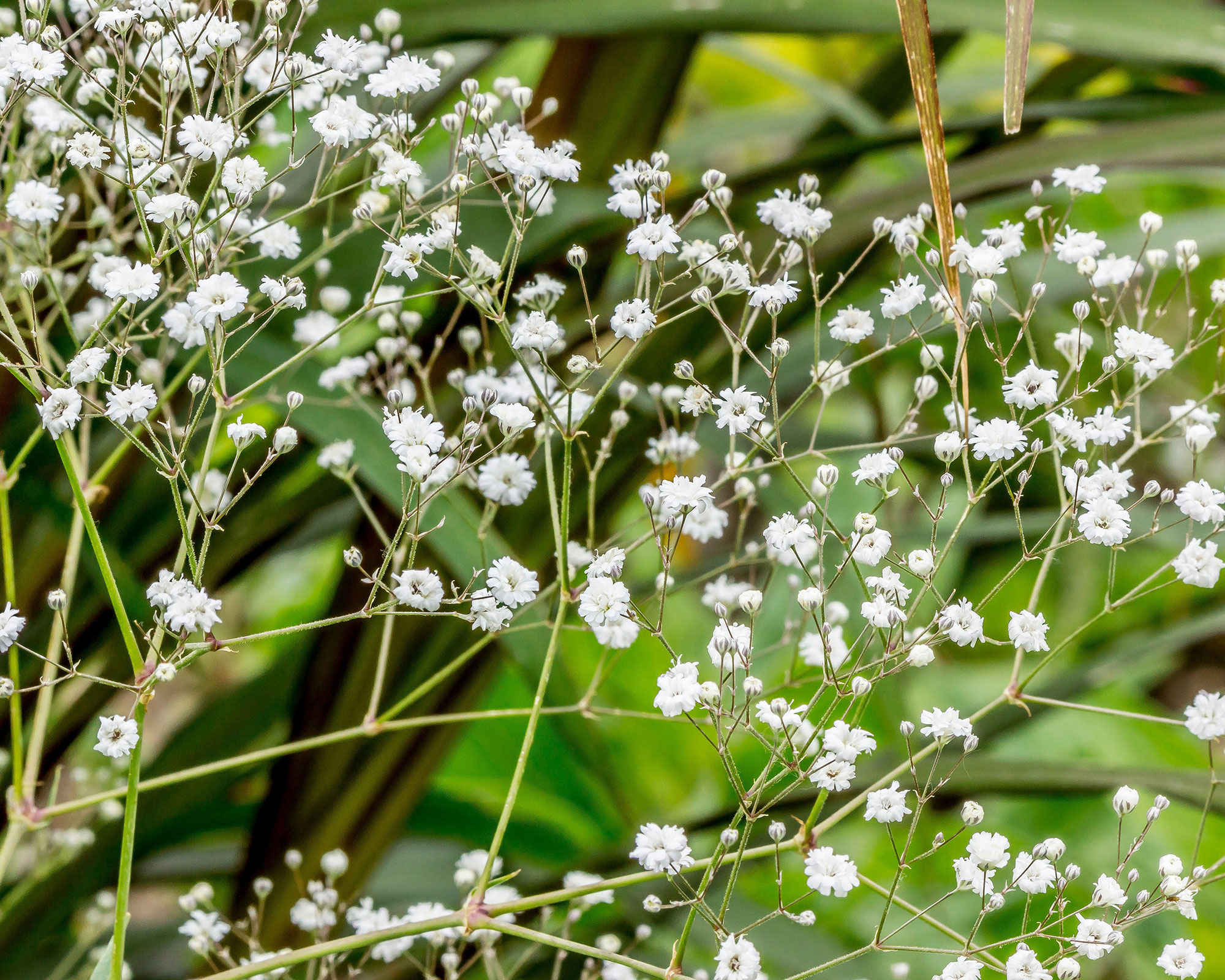
- Where to plant: Any reasonable soil in sun
- When to cut: When most of the flowers are open
- Vase life: Around 10 days
- Height: 18–24in (45–60cm)
With its origins in Central and Eastern Europe, the herbaceous perennial baby's breath is an old-fashioned cutting flower favorite. 'To last more than a year or two without rotting, plants must have a light, well-drained soil,' says Anne Swithinbank.
'Plant in spring into a slightly alkaline soil in a raised garden bed for branching stems of tiny double white flowers creating a misty, ethereal effect from mid to late summer. Gypsophila paniculata 'Bristol Fairy' is a good option to try.'
21. Phlox paniculata
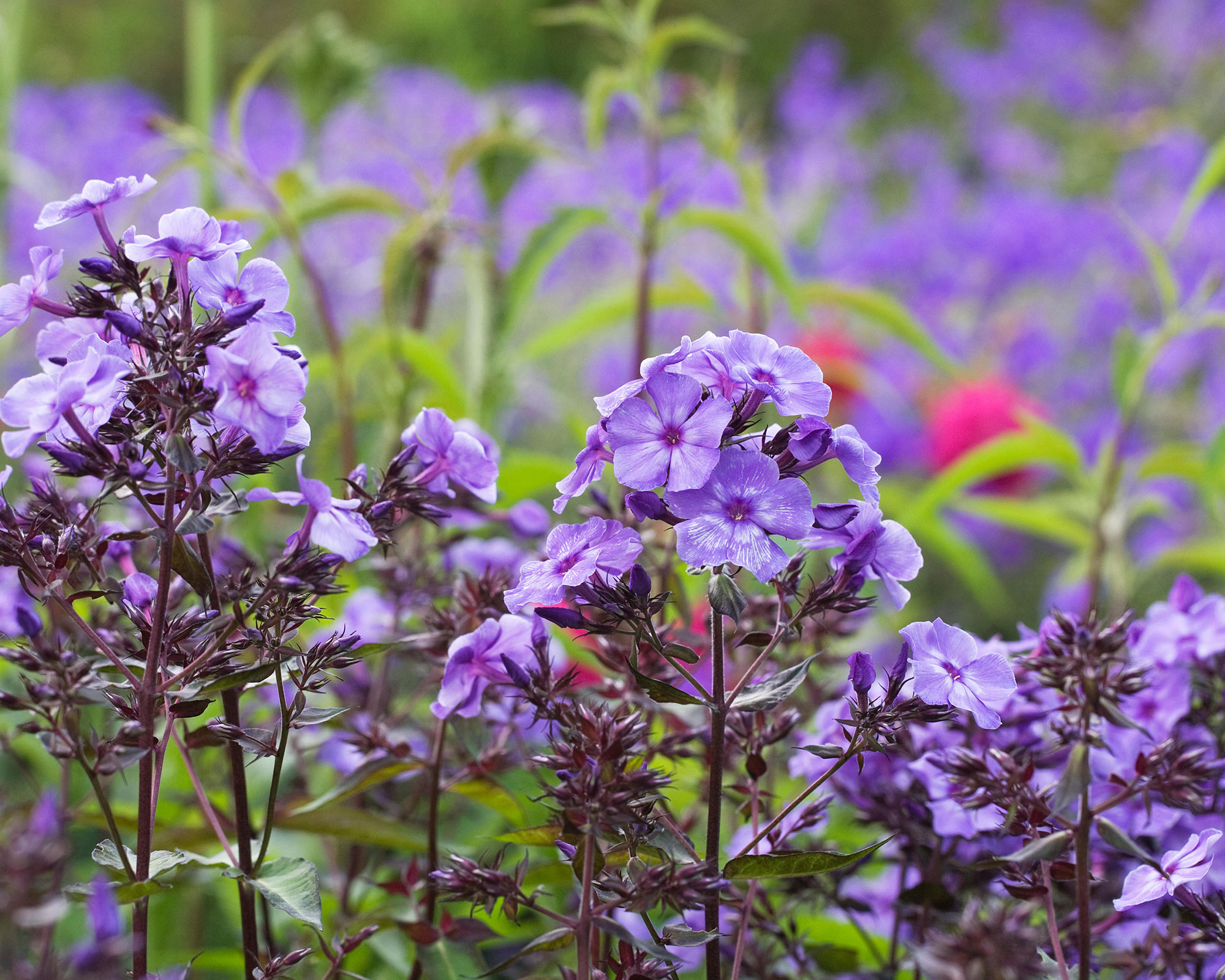
- Where to plant: A sunny spot with moist but well-draining soil
- When to cut: When flowers are newly or fully opened
- Vase life: 5–7 days
- Height: 2–4ft (60–1.2m)
'Compared to annuals, herbaceous perennials have shorter flowering periods but are worth slotting into the backbone of a cutting garden,' says Anne Swithinbank.
'Phlox paniculata are prized for their tall, sturdy stems of fragrant mid and late-summer blooms. "Blue Paradise" [above] is a lovely cultivar with darker eyes.
'For healthy clumps, plant in good, moist but well-drained soil types and don't allow encroachment from weeds or nearby plants,' she adds.
Our guide on how to get rid of weeds and stop them from spreading has lots of useful advice.
What are the benefits of a cutting garden?
As well as ensuring a steady supply of flowers, creating a cutting garden has other benefits, too.
Shannen Godwin from J Parkers, a leading retailer of garden plants, says, 'Being surrounded by flowers on a daily basis is as much a hedonistic phenomenon as it is a practical and functional one, as the benefits of being green fingered are well documented.
'Once more people realize that they can grow their own flower patch to refill their vases, they won't be likely to spend money on commercially-bought bouquets again.'
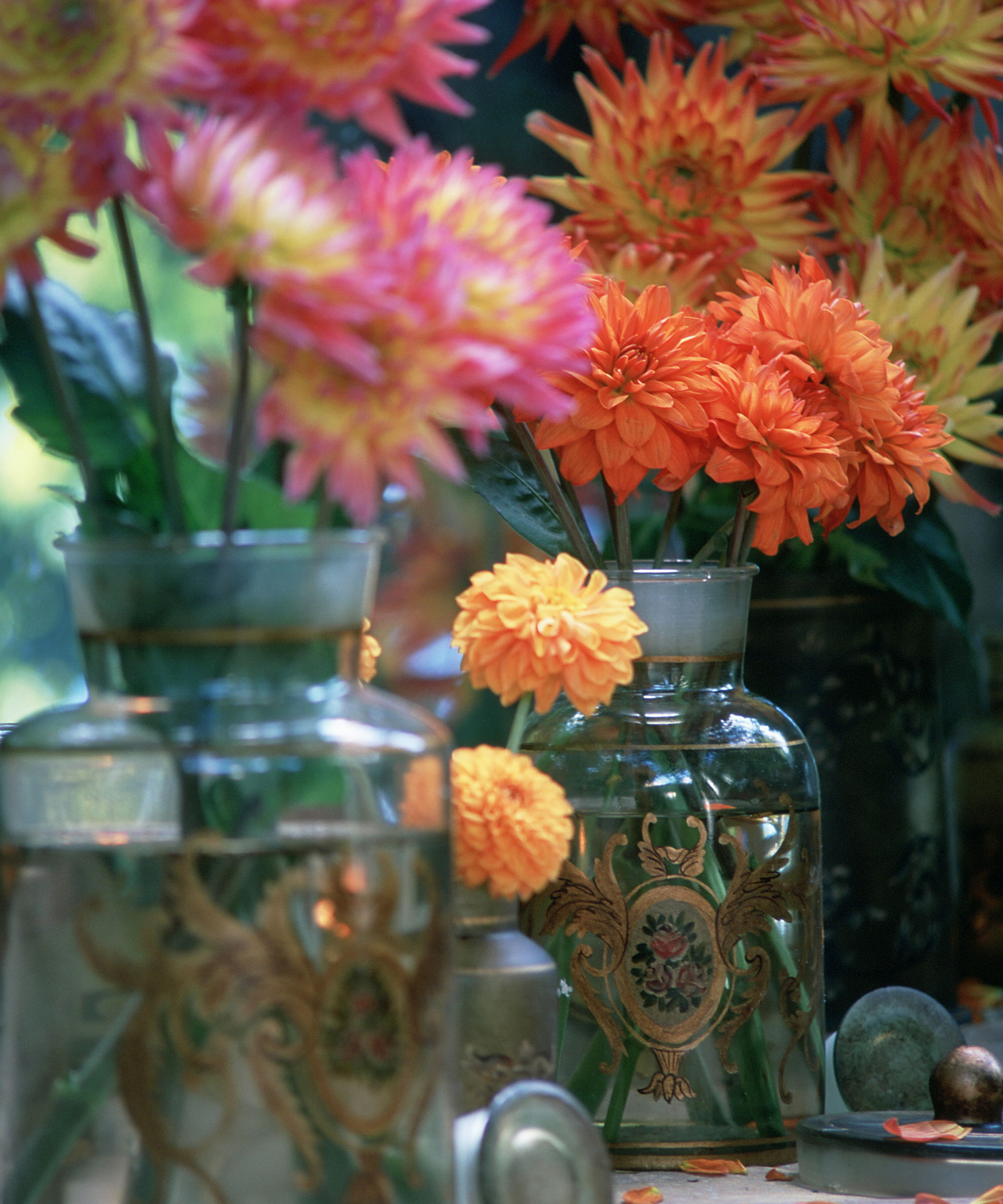
When is the best time of day to cut flowers?
In terms of what time of day is best to cut flowers, Anne Swithinbank advises 'picking when the stems are full of water in the early morning or evening. If plants are droopy, water first and pick later.' Avoid cutting flowers in the heat of a summer day.
Want to grow flowers that you can eat as well as display in your home? Our list of top edible flowers is definitely worth a look.
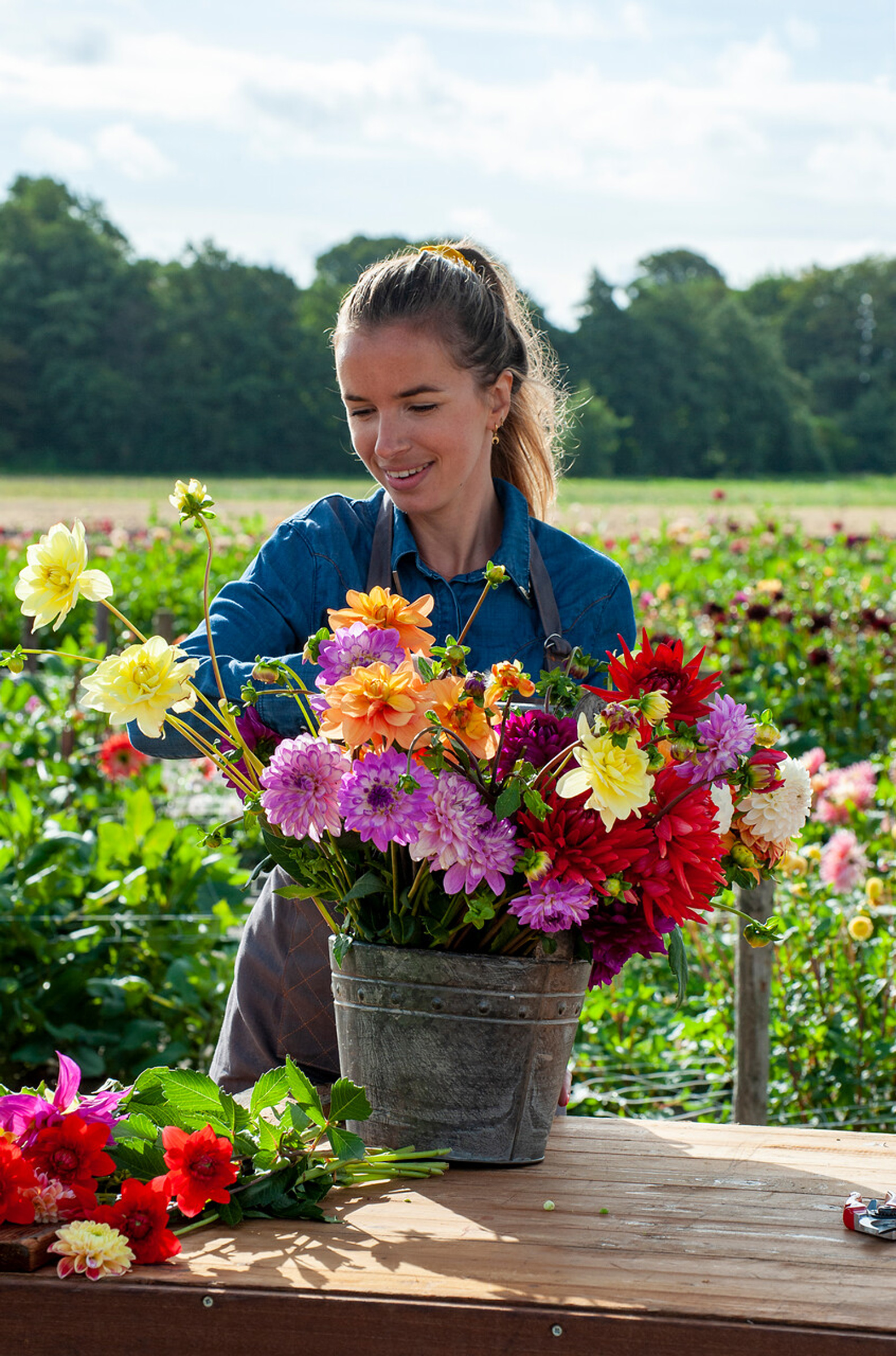
How can you make cut flowers last longer?
'Strip unwanted foliage from the base of stems and place in a bucket of tepid water in a cool, shady spot,' says Anne Swithinbank. Some people add flower food designed to feed and help prevent bacteria from blocking water uptake. More importantly, use clean vases, change the water regularly, and keep flowers out of full sun.
'Collect vases of many shapes and sizes and if stems need supporting, use old-fashioned "flower frogs" or chicken wire instead of non-biodegradable florists foam,' she adds.
The experts at J Parkers also have these tips for extending the life of your blooms:
- Cut the stems and retrim every few days to refresh their lifespan.
- Prune the flowers constantly to remove anything that is wilting or has started rotting to prevent the spread. You can use a small set of the best secateurs to do this.
- Use flower food every time water is changed every few days, and put them in room-temperature water.
- Keep fresh cut flowers away from direct sunlight or heat sources.
- Mist them regularly with a fine spray.
- Add a few drops of vodka to the water to slow down the flowers' aging process.
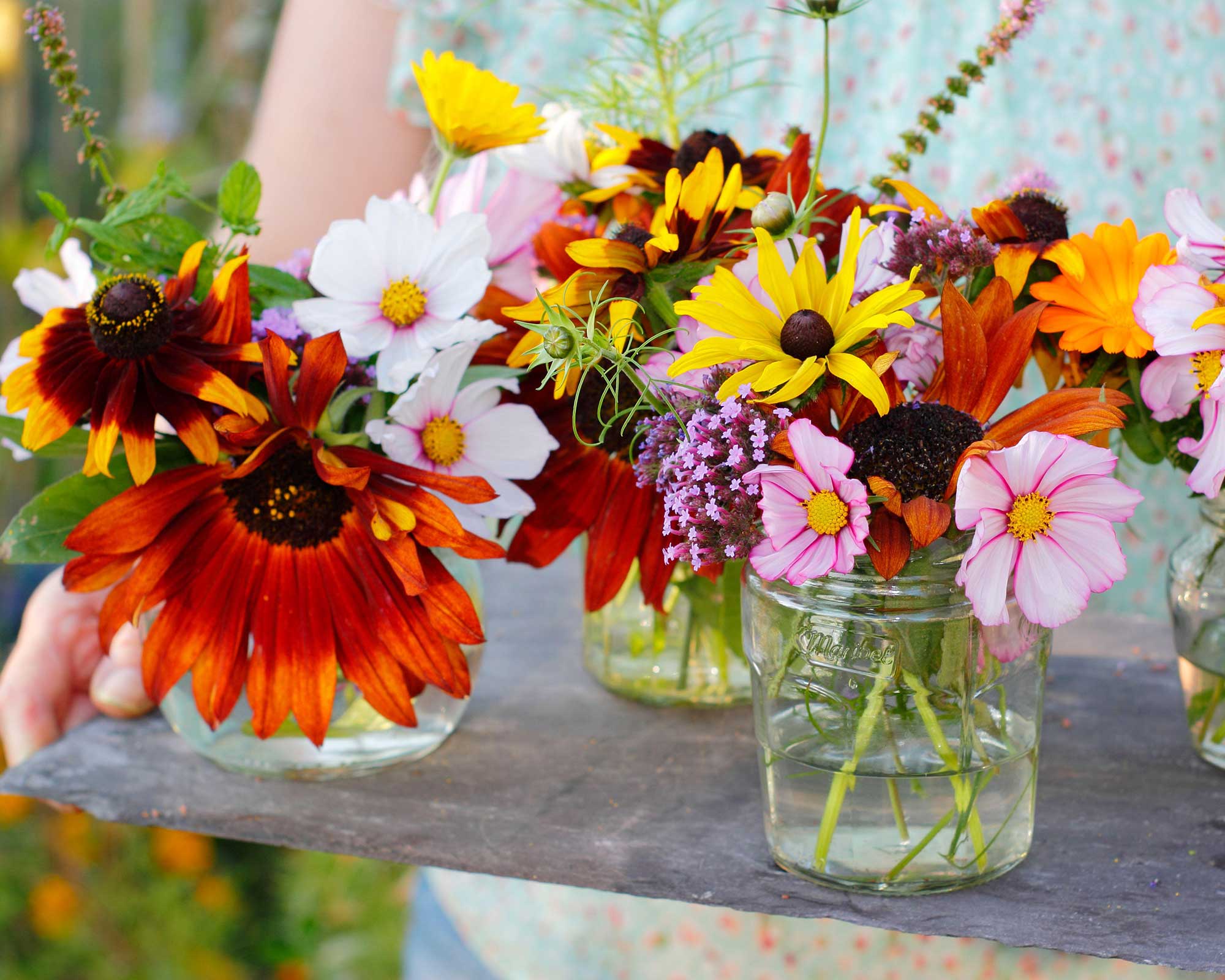
How do you stop tall stemmed cutting garden flowers from toppling over?
'For a cutting garden, we tend to choose taller cultivars with longer stems that need supporting,' says Anne Swithinbank. 'One method is to fix wide-gapped netting over developing plants 14in (36cm) off the ground, stretching it between canes. Stems grow through and disguise the netting. Twiggy sticks work for some plants, while tall dahlias and tithonia are best secured to individual canes.
'Avoid over-fertilizing plants, as too much manure or nitrogen-rich fertilizer causes weak, sappy growth. On good, well-conditioned soil, a couple of high potash feeds during summer will be sufficient.'
Which are the best cutting garden flowers to grow in shade?
If you're looking to grow flowers for cutting in a shade garden, you're in luck – there are a few pretty options.
Lily-of-the-valley is a good choice. Its broad green leaves can be cut as well as its dainty, super-scented bells. The leaves of lady’s mantle, alchemilla mollis, are valuable cut when they are fully developed and the clouds of foaming greenish-yellow flowers go with just about everything. Hellebores last well, but wait until the flowers are mature before snipping. As mentioned above, astrantias are a good choice, too.
Taller options include foxgloves – the boldly spotted types are especially pretty – and columbines (aquilegia) which come in an astonishing array of colors and bicolors and can be single and double-flowered.

An experienced freelance journalist, editor and columnist writing for national magazines and websites, Fiona now specialises in gardens. She enjoys finding and writing about all kinds, from the tiniest town plots to impressively designed ones in grand country houses.
- Anne SwithinbankFreelance writer
- Graham RiceFreelance writer
